Dear Steemit friends :
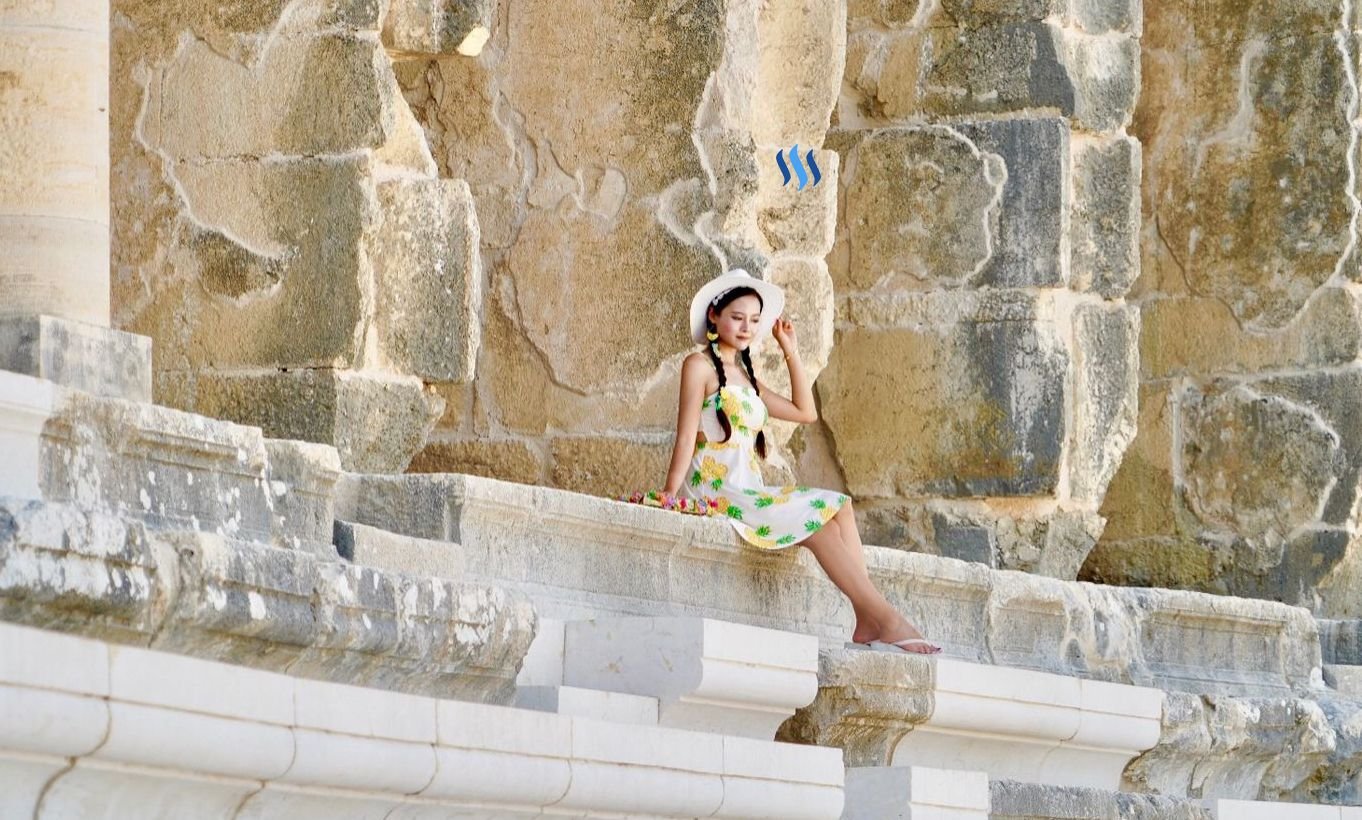
Did you know that there are more ancient Roman ruins in Turkey than there are in Italy?
In our travels around Turkey thus far, we've had the pleasure of visiting some of the worlds greatest historic sites, taking us back to the prime of the bygone ancient civilisations. Today, these ruins are littered all over Turkey, reminding us that Turkey was once a pivotal region for empires ruling Asian Minor.
Perhaps one of the most amazing ancient ruins that we've seen so far is Ephesus, the ancient city cited in the bible's Book of Revelation. It's ruins are so well preserved that walking amongst them, little imagination is needed to reconstruct them in their past glory.
Central to almost all significant settlements are the Theatres which themselves command presence because of their sheer scale and utility. The theatre at Ephesus was a well preserved and a classic example of the ancient amphitheatre. A very large, building leaning on a side of a hill, built on higher ground, and it's size, a league of it's own.
Another ancient city ruin we visited was Hierapolis, famous for its massive necropolis and not to forget the Antique Pools which Cleopatra herself once bathed in. Hierapolis was built beside the famous Pamukkale mineral springs and "Cotton Castles". As one of the largest ancient cities, it too has an impressive Theatre, one which remains very much intact and situated against a hill at the highest point of the city. The theatre grants magnificent views of the entire valley below the White Travertine Terraces as well as the entire city of Hierapolis.
Today, we'll be taking a visit to two ancient ruins near Antalya, first up, Aspendos.

Aspendos is an ancient town located about 40km east of the modern city of Antalya. Perhaps the most famous of it's ancient monuments is the theatre, considered the best-preserved theatre of antiquity.
Most hotels will have day trip excursions here, you only have to enquire and agree to a price. I was very lucky to find a taxi driver offering a set price to take me there. He was even happy to wait in the car park whilst I went inside. This method of transport is probably the most straight forward if a tad more expensive.
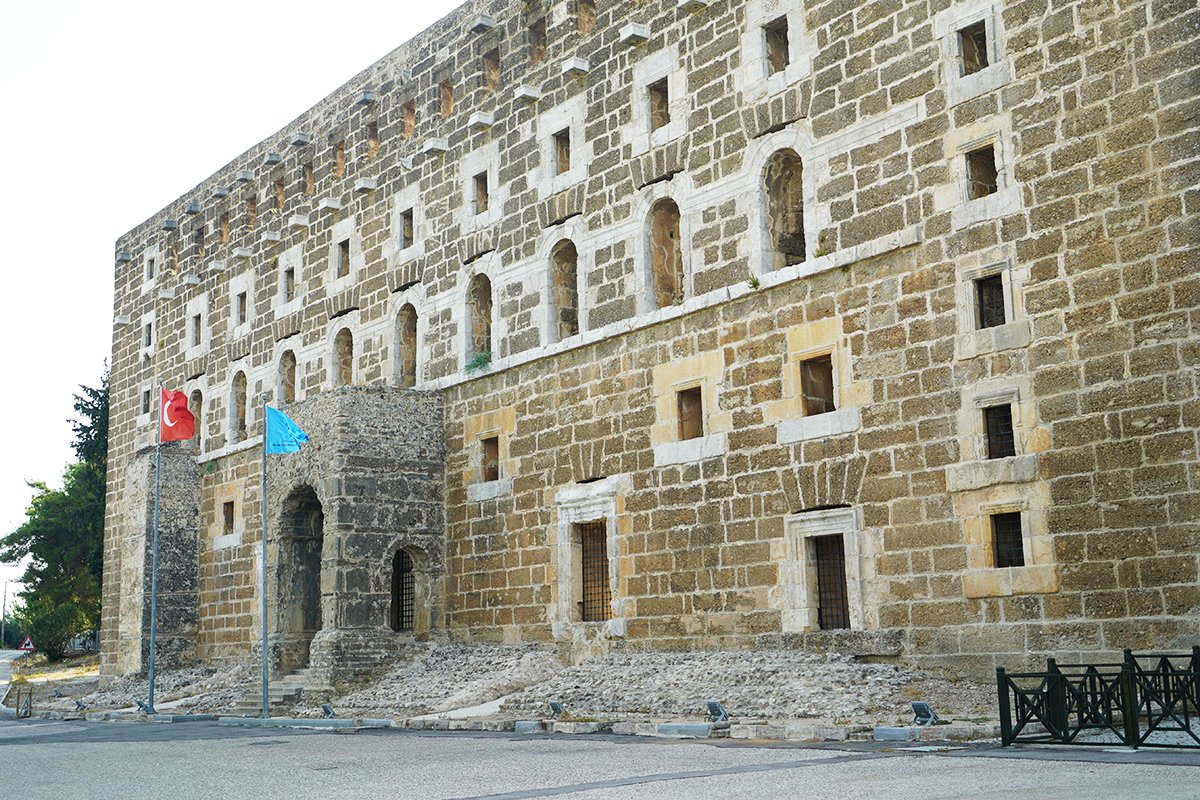
From this angle, the theatre almost looks like a regular building. Most other ancient theatres I've visited do not have such a tall skene building. I certainly wasn't expecting such a large round structure on the other side of it.
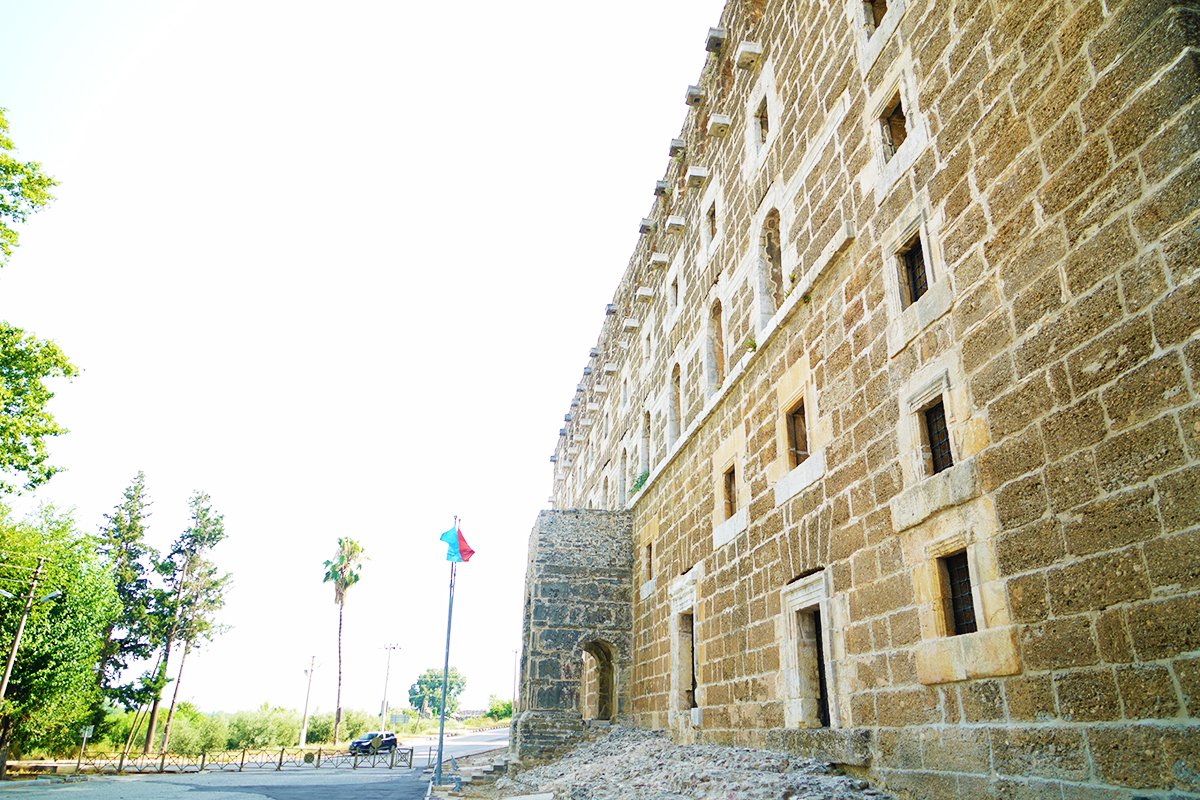
To enter the theatre, there is a side entrance which leads into this dark tunnel. On the other side, the stage area.

As soon as you come out of the Tunnel, this is the exact view you get. Pretty amazing right!?
This must be the largest Skene I've ever seen. It consists of a facade and a proscenium. The facade is two tiered and visually divided into two levels. There also used to be a wooden roof on top.
There are five doorways which give entrance inside the proscenium, the largest of which was in the middle and marked by the stone steps.
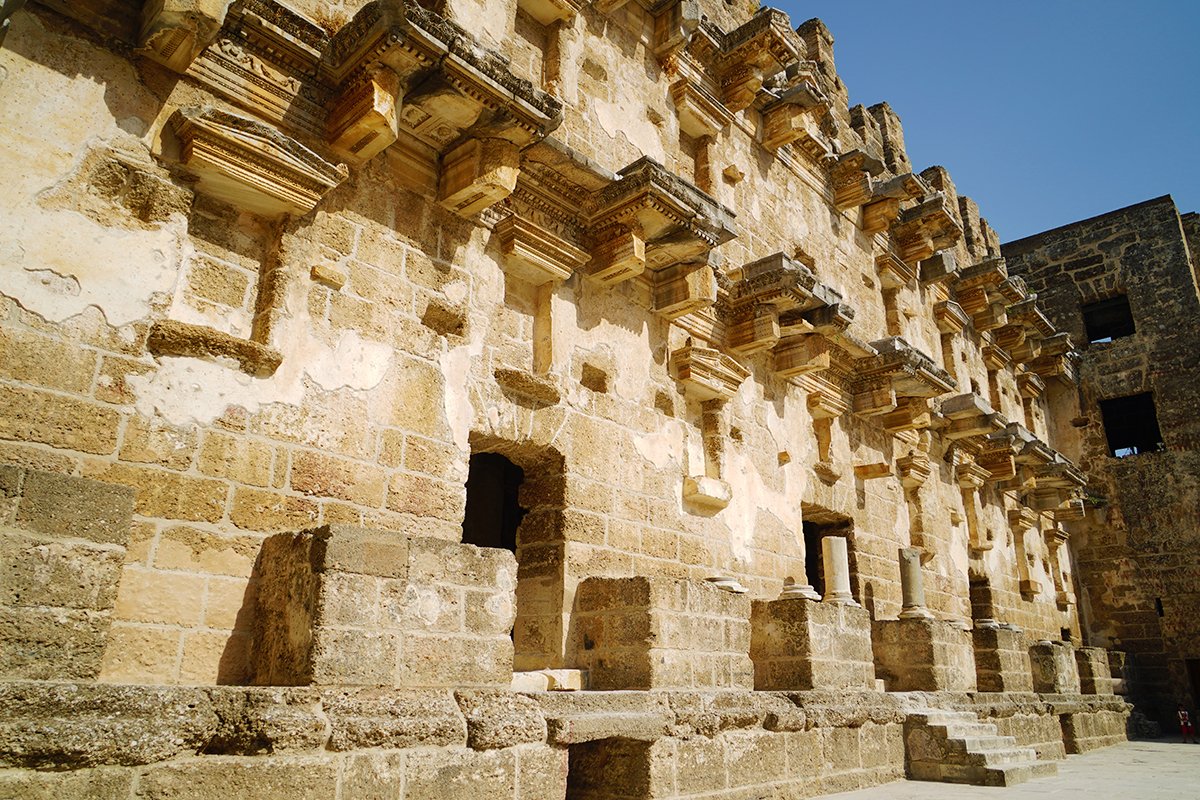
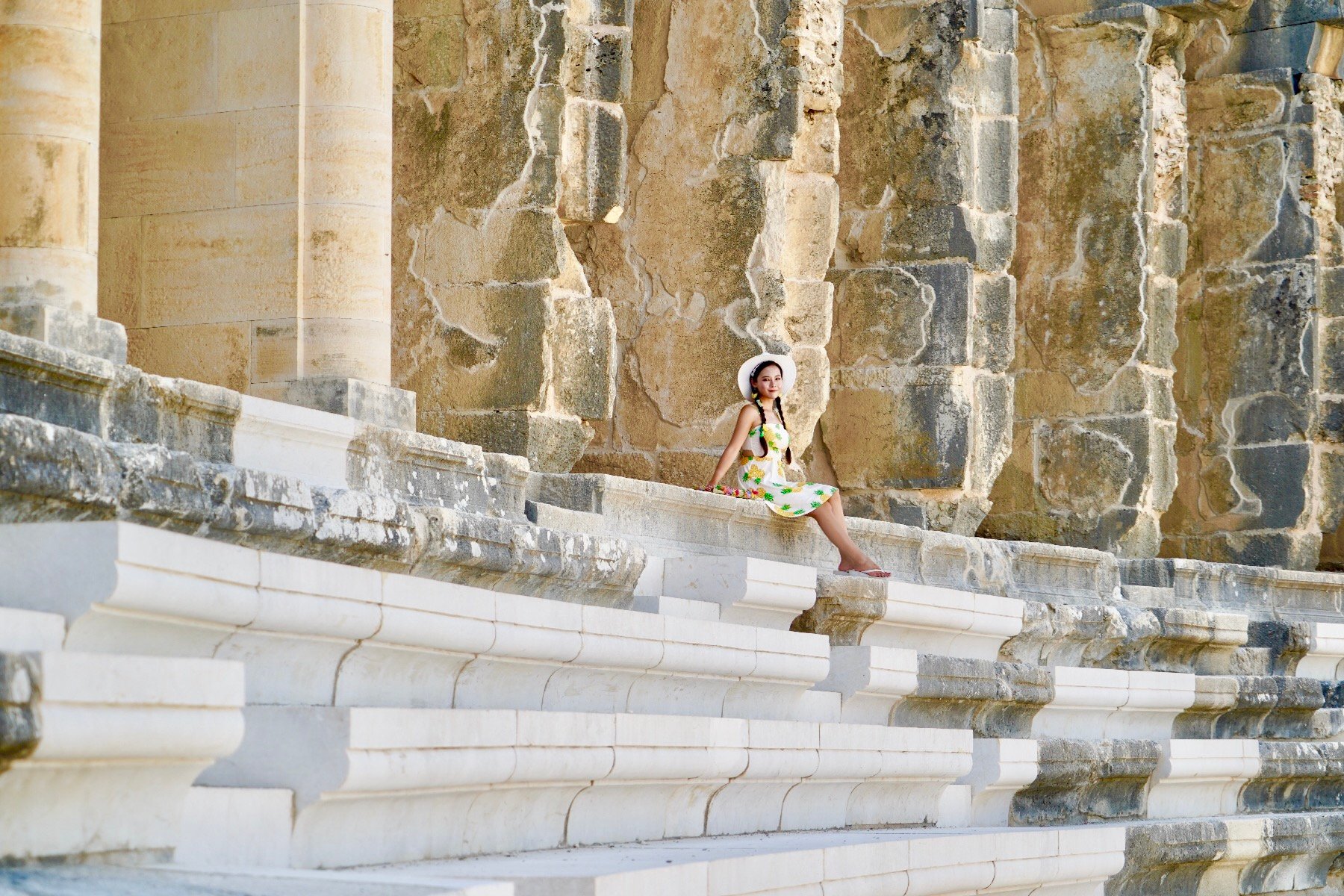
At the top of the auditorium, there is a colonnade which was primarily used to shade the spectators.
You can also see the auditorium is divided into an upper level and lower level by a horizontal diazoma.
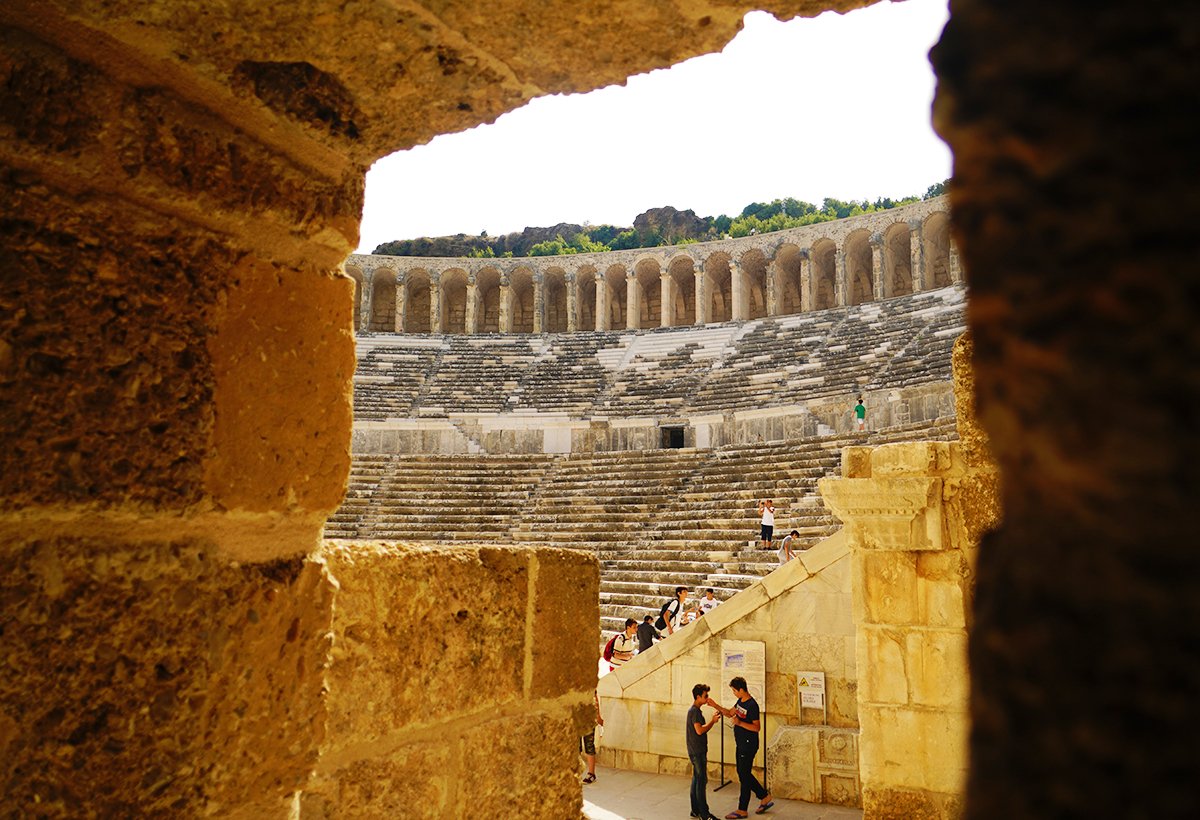

This is another view of the skene building from the upper level of the auditorium.
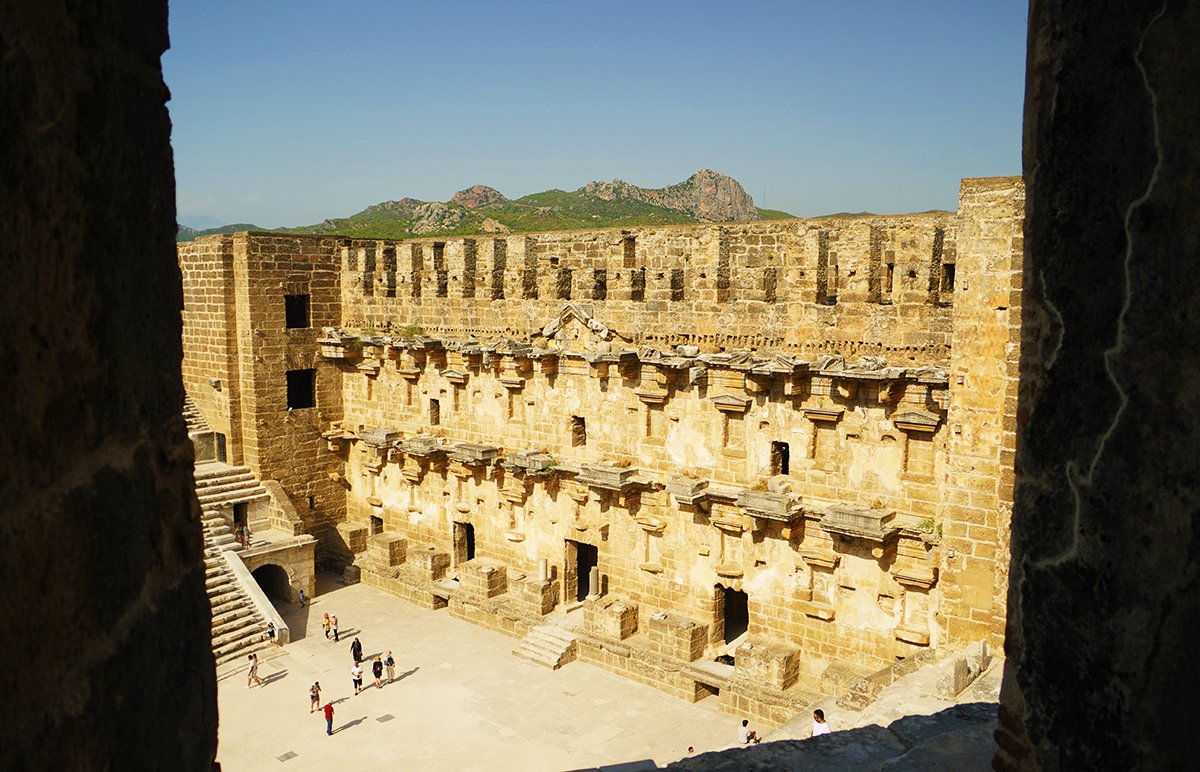

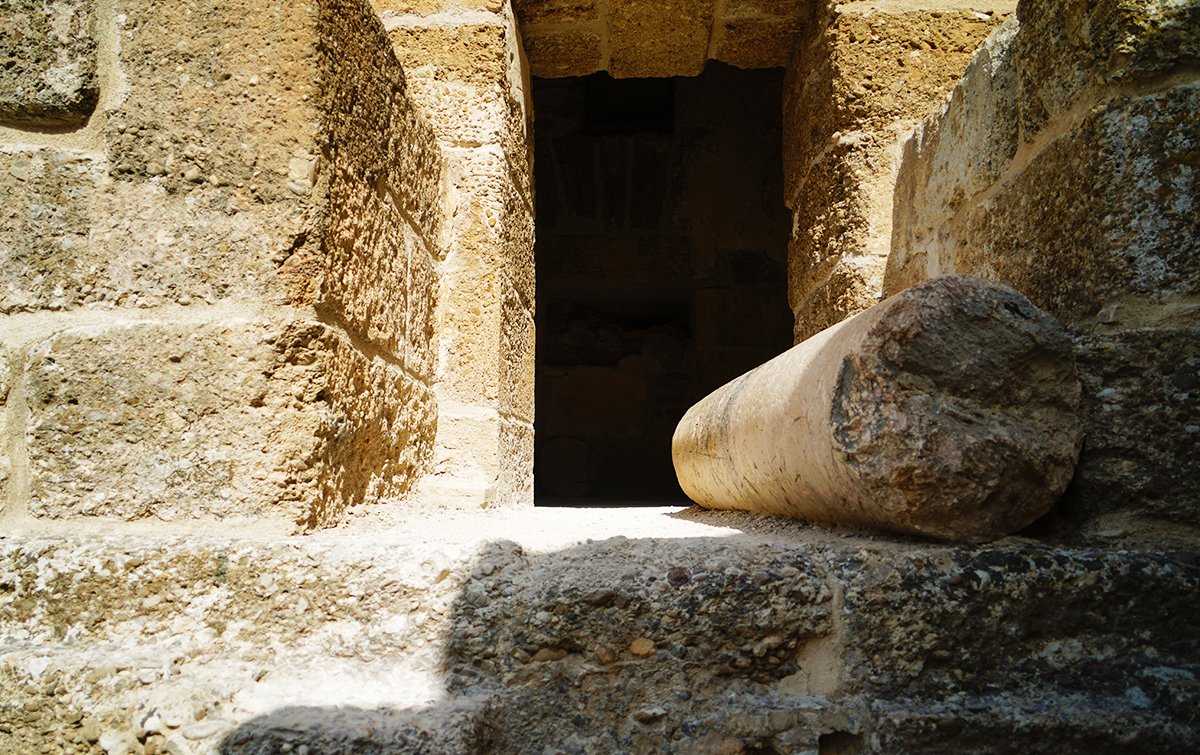
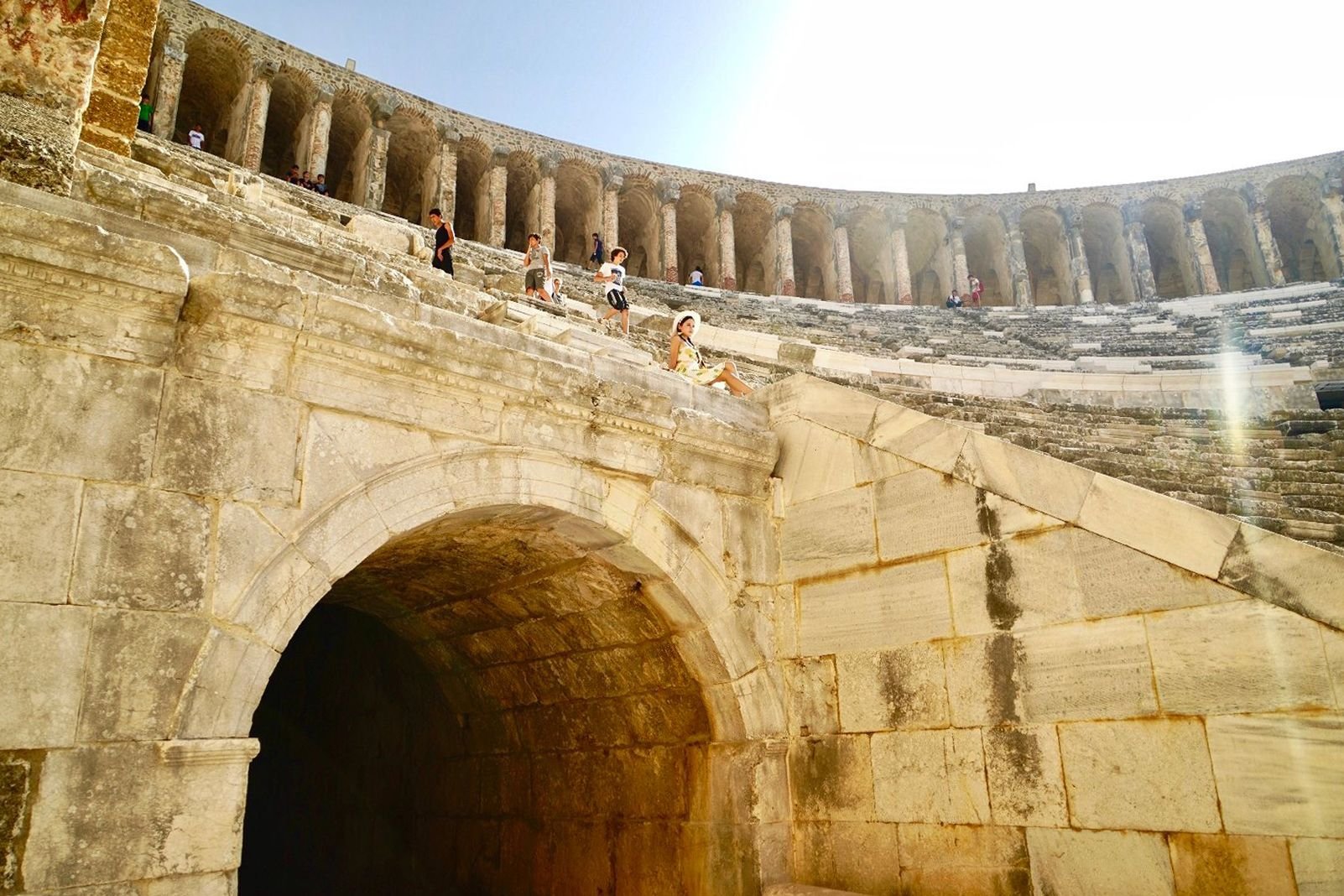
This is the arcade supported by the colonnade at the top level of the auditorium. It curves all the way round the entire horseshoe shape of the auditorium.



Sitting right at the top of the auditorium, this is the view you can expect of performances. Here you can see just how well preserved the theatre is. The skene building is almost entirely intact.
As you can see, the building has the typical features of a Greek theatre, the horseshoe shape of the auditorium, and it's back resting on the hillside. However, the theatre was actually building in the 2nd century AD under the rule of Roman emperor Marcus Aurelius, thus, the skene building gives it's Roman heritage away.
Interestingly, the architect of the theatre is known to be Zeno - a Greek architect who was born in Aspendos. He is one of the few architects known for ancient ruins.

There is supposedly a story behind the construction of the theatre.
A competition was setup by the ruler of Aspendos to marry his daughter. The winner must build something which contributes most to the cities' prosperity. Of the two finalists, one was the architect of this theatre, and the other was responsible for building the systems of canals and aqueducts which supplied Aspendos with water.
At first, the ruler was more impressed with the canals and aqueducts, but then upon visiting the theatre, he stood in this exact spot and heard a whisper in his ear.
"Your daughter will be mine"
It was the builder of the theatre and he was in fact down at the scene of the theatre. Impressed by the amazing acoustics of the theatre, the ruler awarded his daughter to the architect of the theatre. Of course, the wedding ceremony was also held here too.

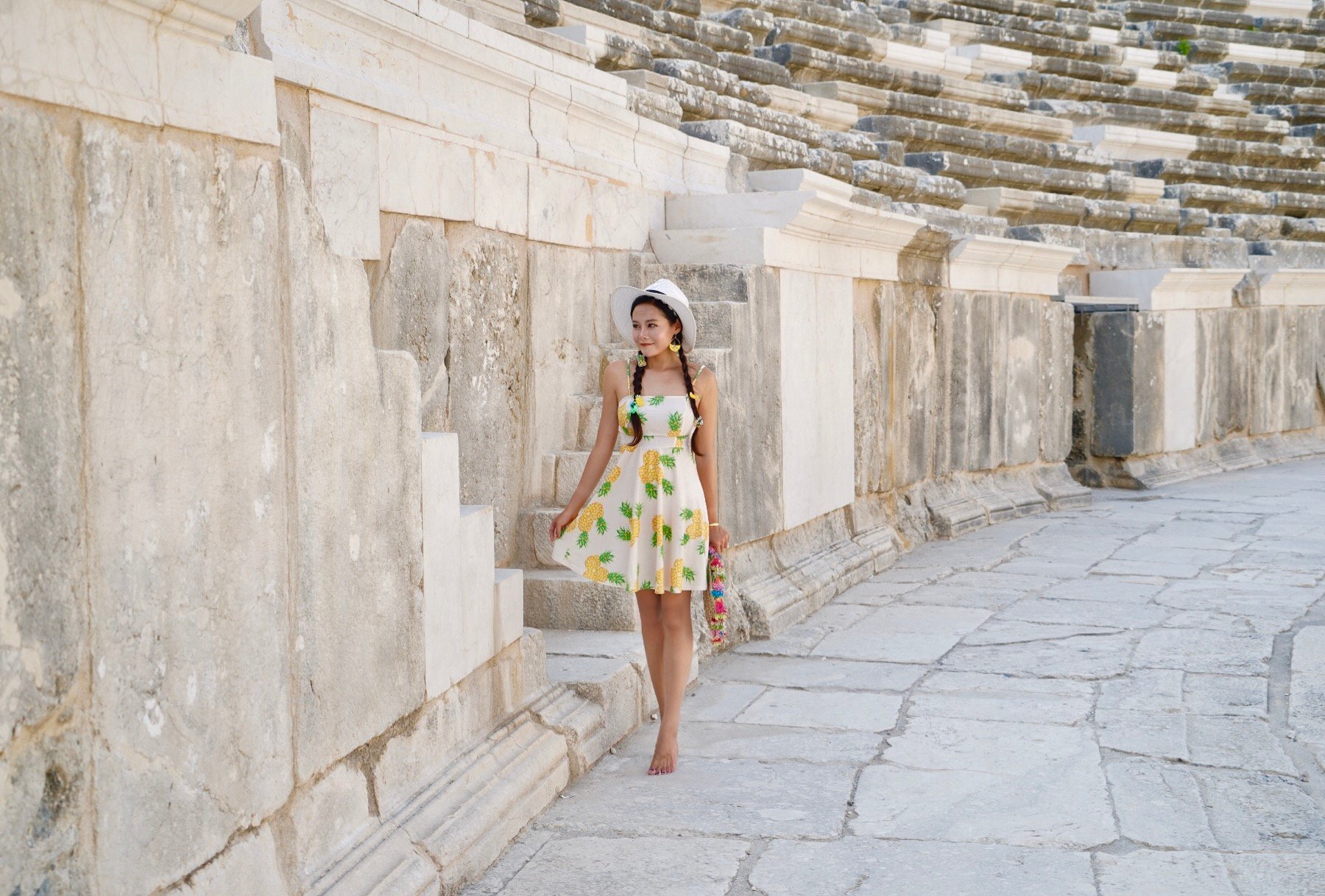

Perge
After spending some time in Aspendos, it was time to head to the next destination of the day, and half way back towards Antalya to another ancient city named Perge
This ancient city was once a flourishing city in Pamphylia. One of the four great cities of Pamphylia, the other three being Sillyon, Aspendos and Side.
Most of the ruins which survive to this day date back to the Roman period which began around 188 BC. It was under the Roman imperial rule that Perge flourised.
Perge was also visited by St. Paul as cited in the bible's Acts of the Apostles. He visited the city twice as a missionary and helped spread the influence of Christianity in the region.
Aside from St. Paul, another notable person who lived in Perge was Apollonius - a student of Archimedes and the author of a series of books which describe what we know today as Conic sections.
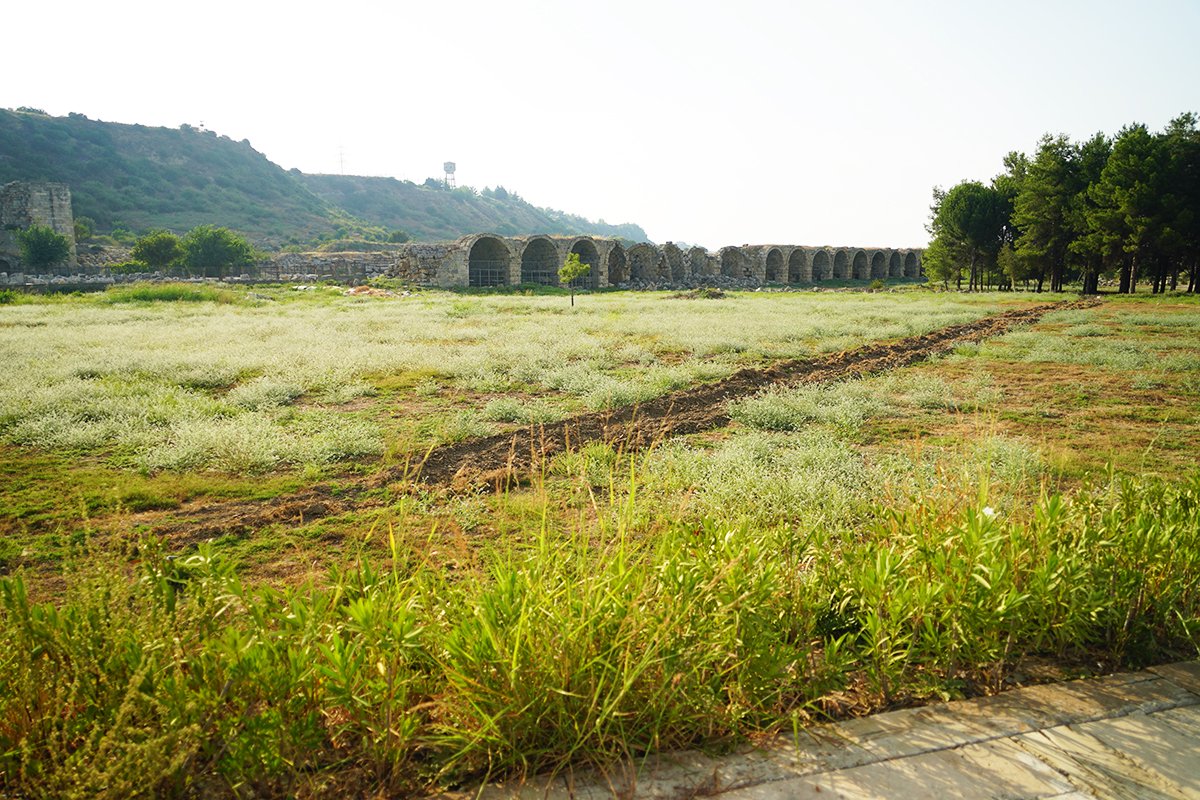
Perge also had it's own theatre, as you can see the city had no clear boundaries, and this was in-fact by design. There was no fortifications of the city and thus, Alexander the Great was able to conquer the city with little to no resistance.
The theatre is the first major landmark you will see as you come to the site. However, it's condition is much poorer than the theatre at Aspendos and as a result, is going through a lengthy restoration process that bars anyone from visiting or seeing it from the inside.
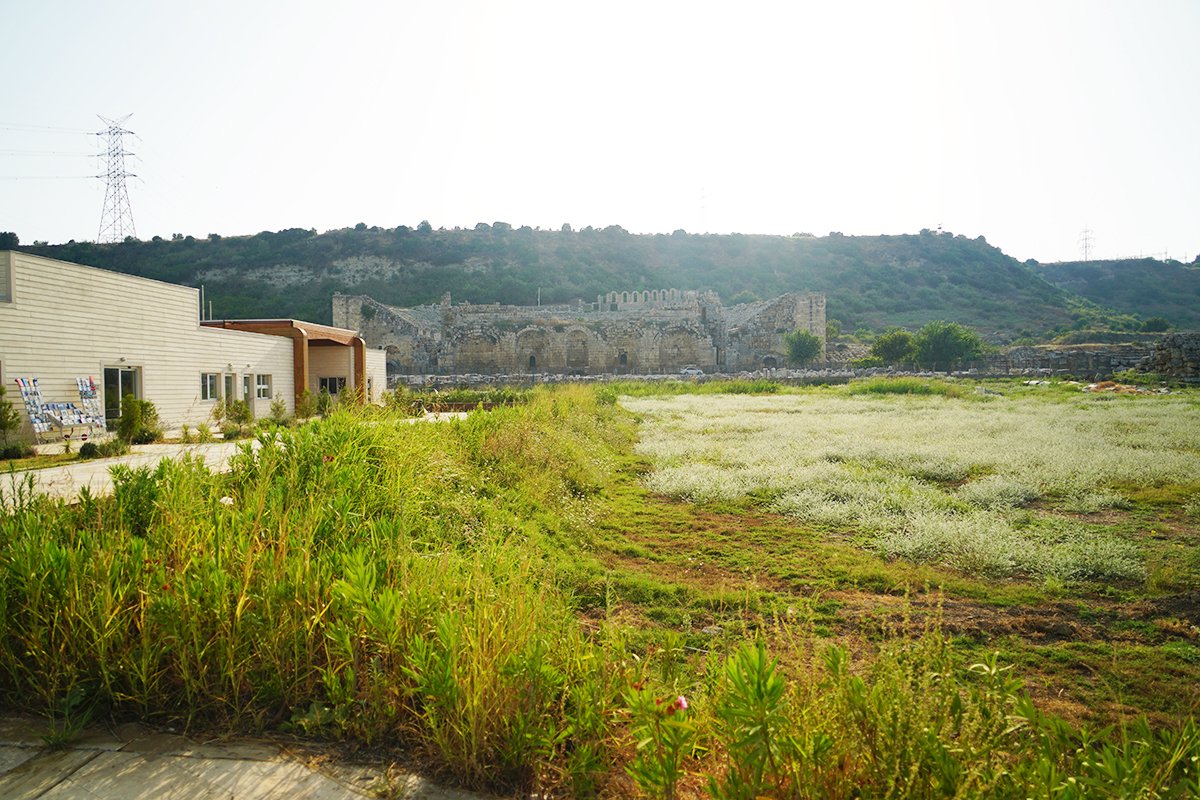
After purchasing the entrance tickets, you are led a long a long path to the ruins. Along this park, you can see a lot of the pieces of the buildings being collected and organised as they are unearthed. Surprisingly, there were no people at all. It was as if the city was haunted and I was the only person that didn't know..
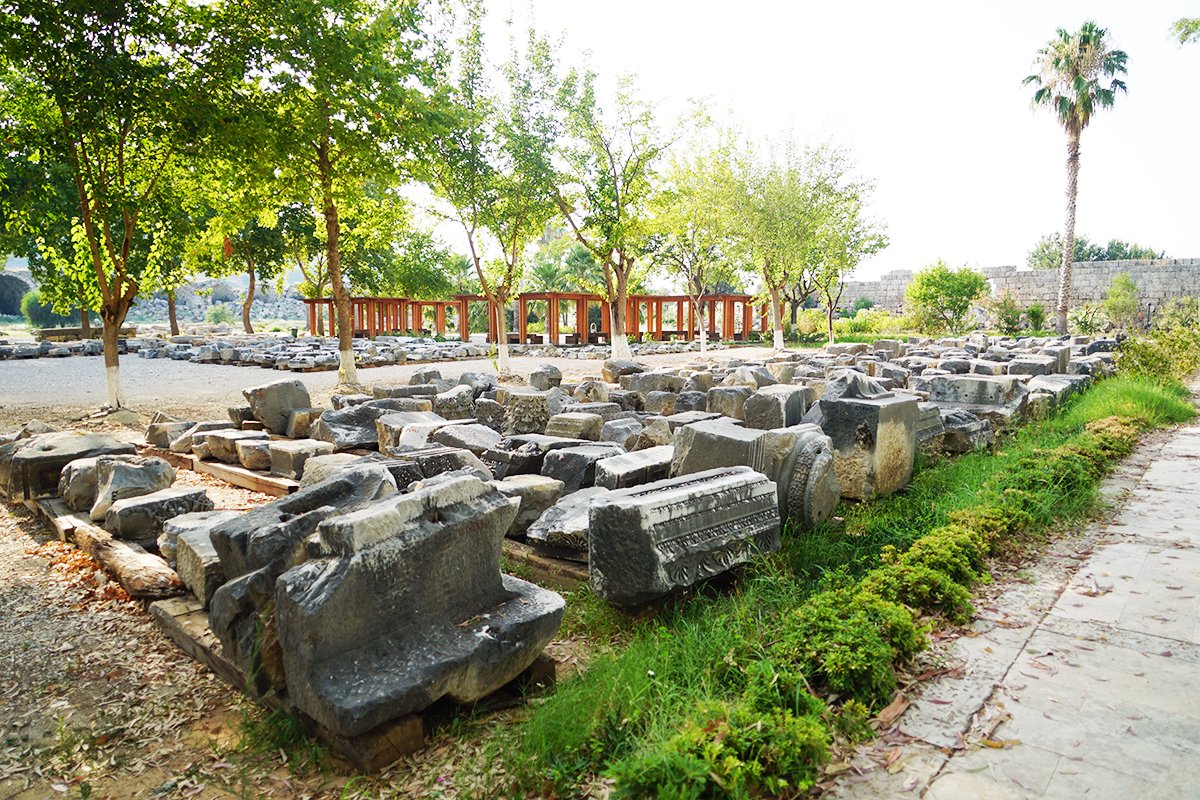
Most of the surviving ruins are from the Roman period although some signs suggest that some were from the Hellenistic period.
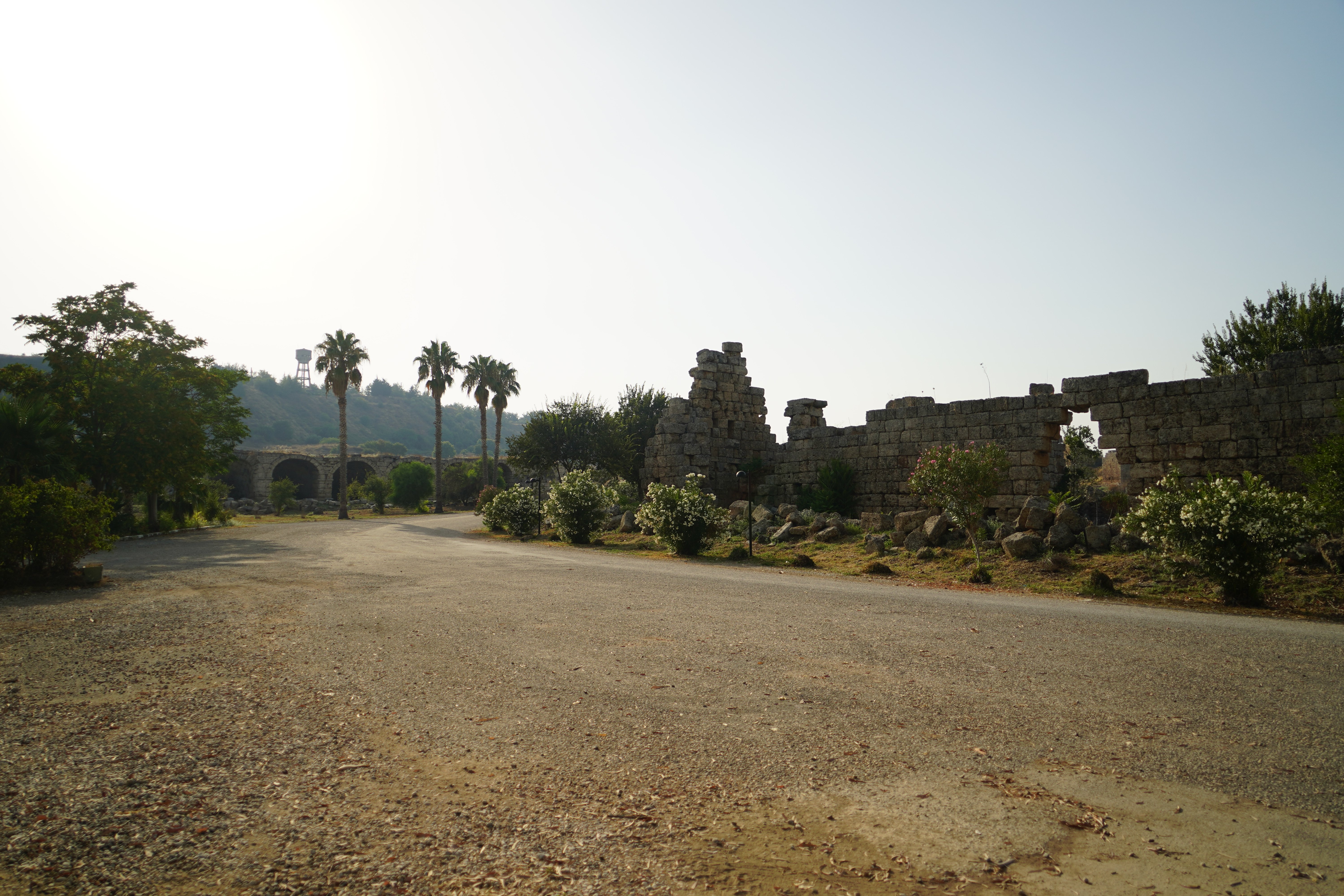
This is the path that leads into the city. On the left, the remnants of the Roman city gates doubling up as the "main entrance".


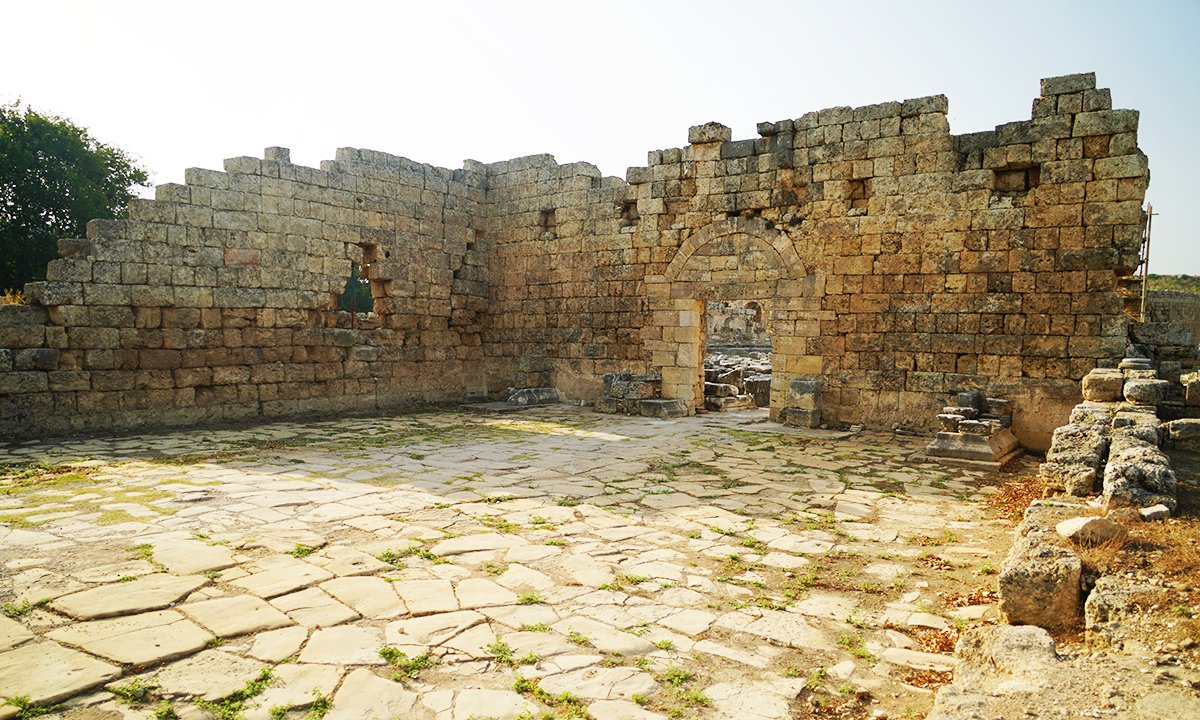
This is the Roman city gates. To the right of the picture, are where the baths would have been
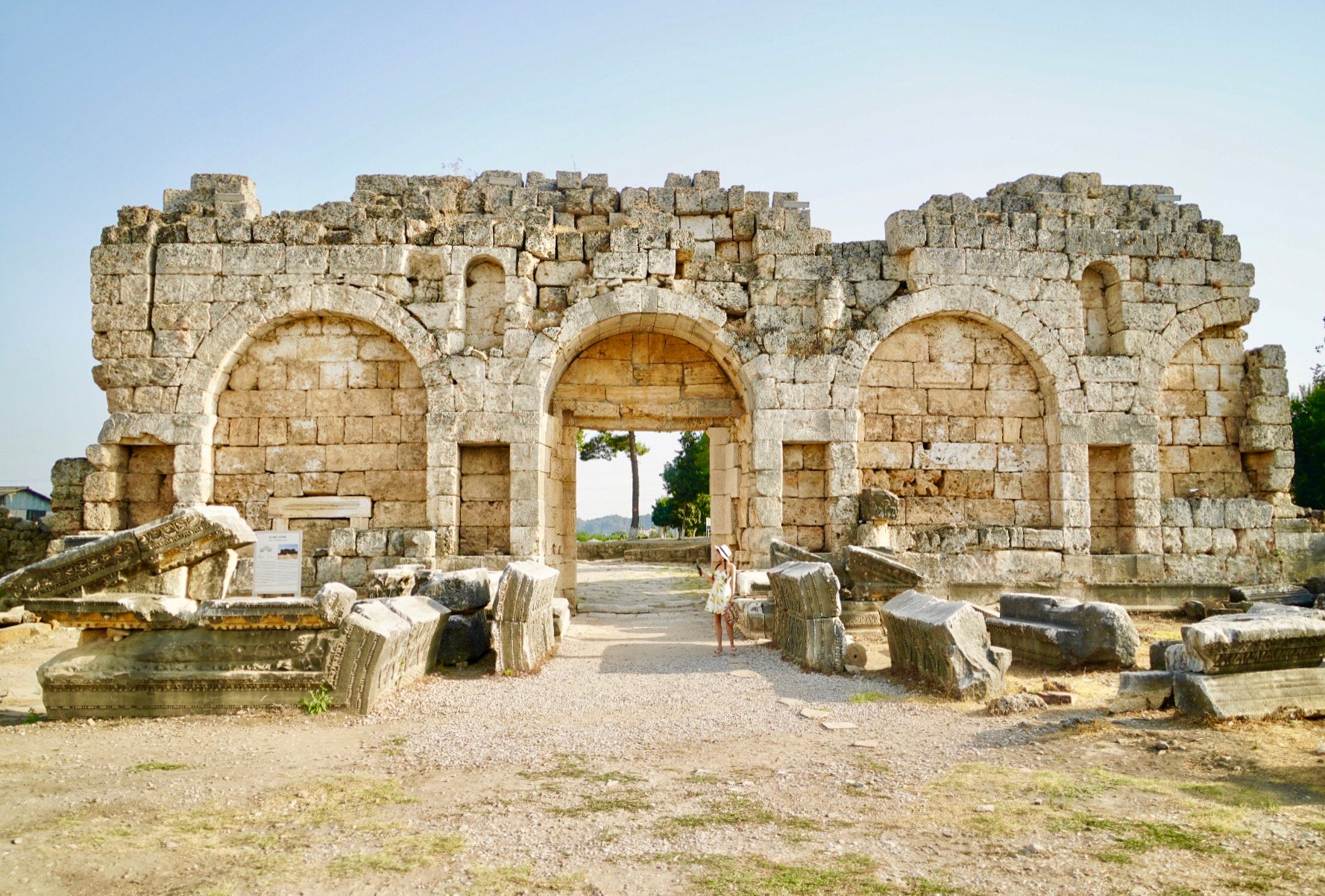
Today, the baths lie almost completely in ruin. It's hard to make out what it would have looked like from the scattered rocks.
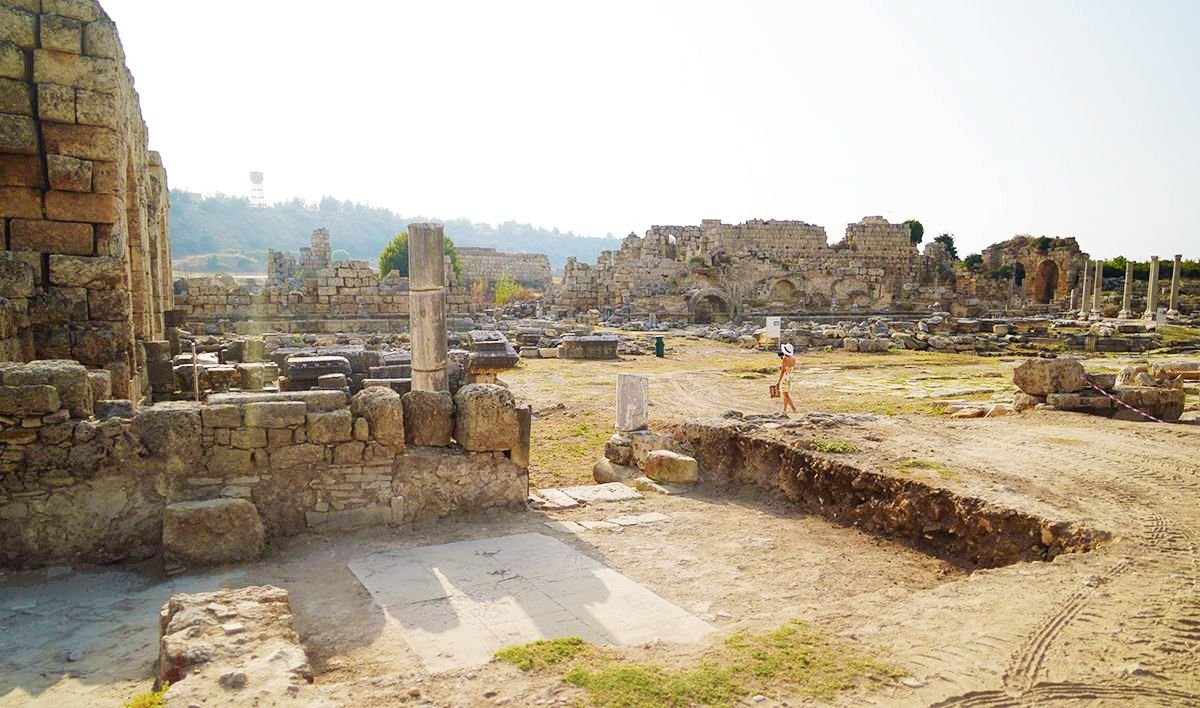

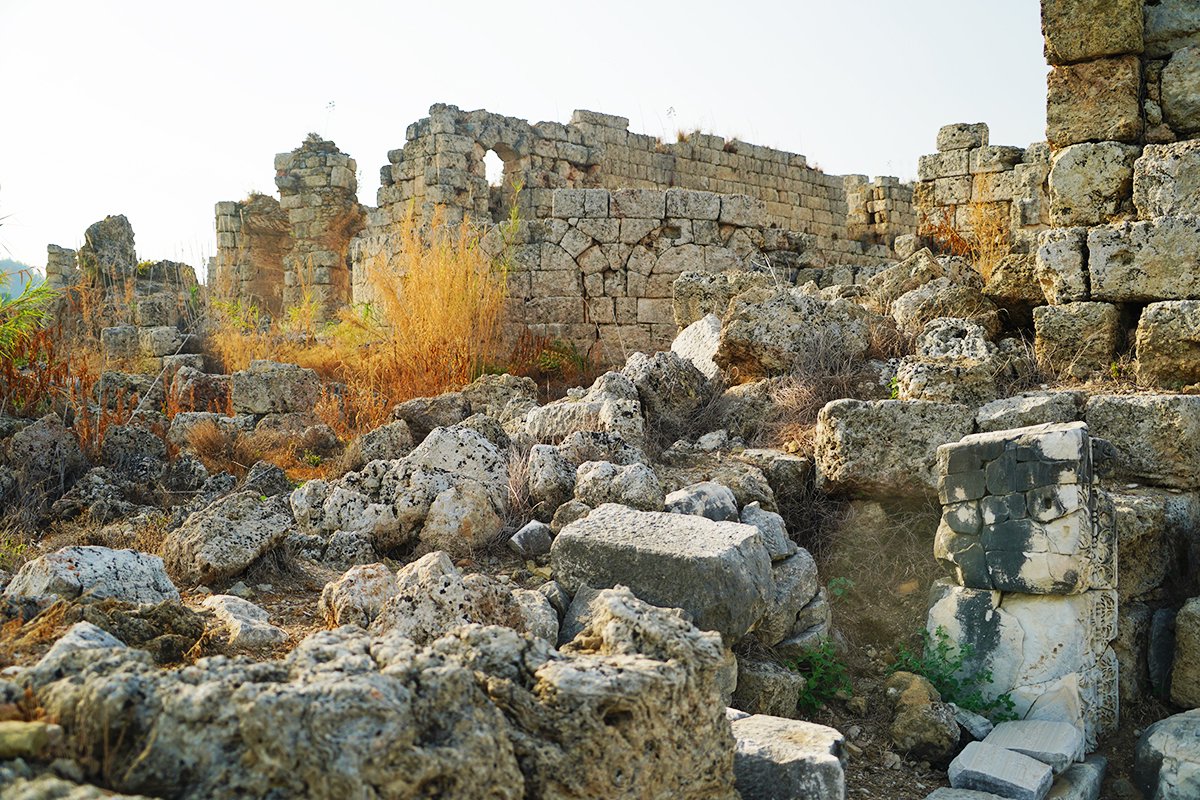
In the distance, you can see one of the two remaining cylindrical Hellenistic towers left in partial standing. To the right of it, there was another one being restored.
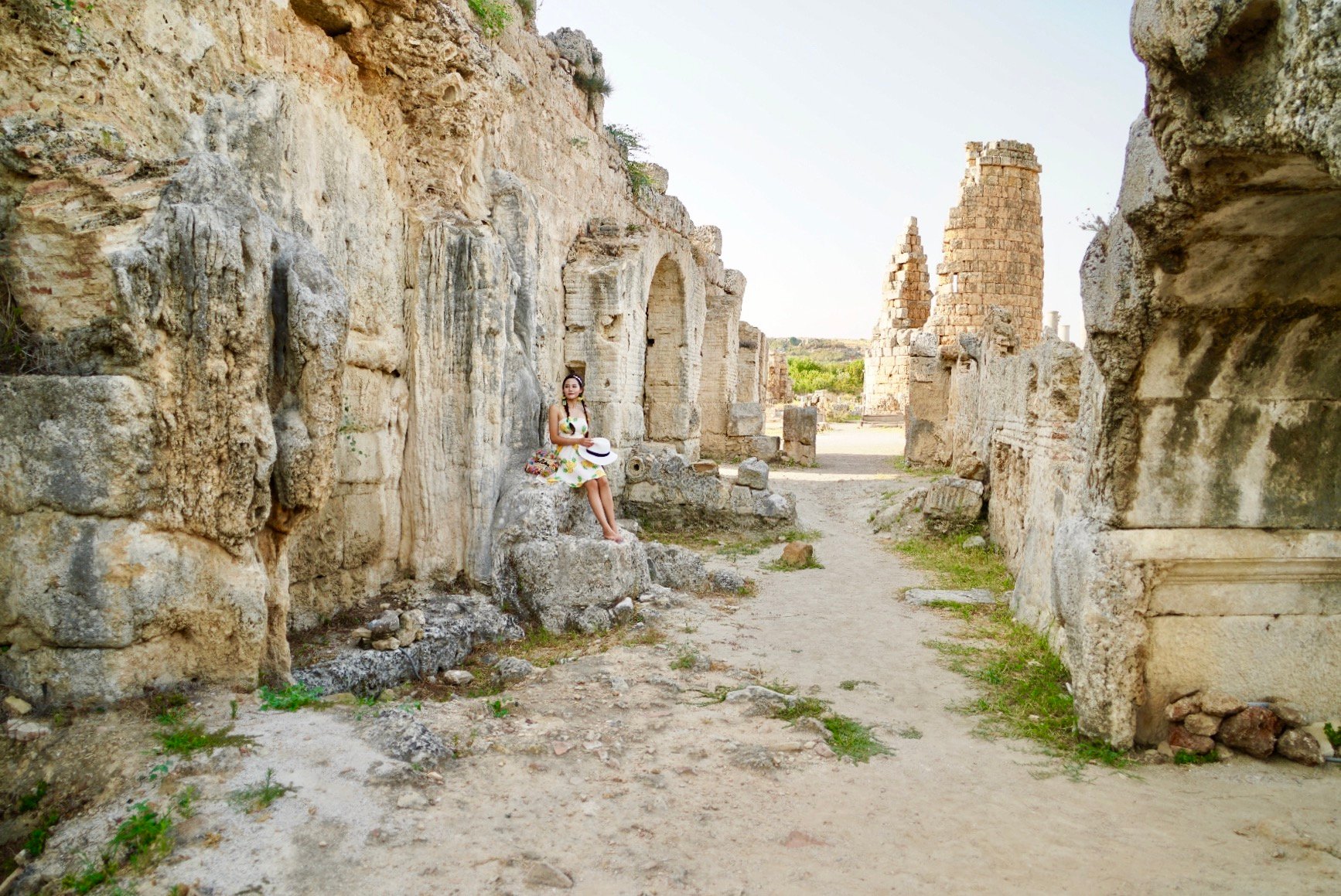
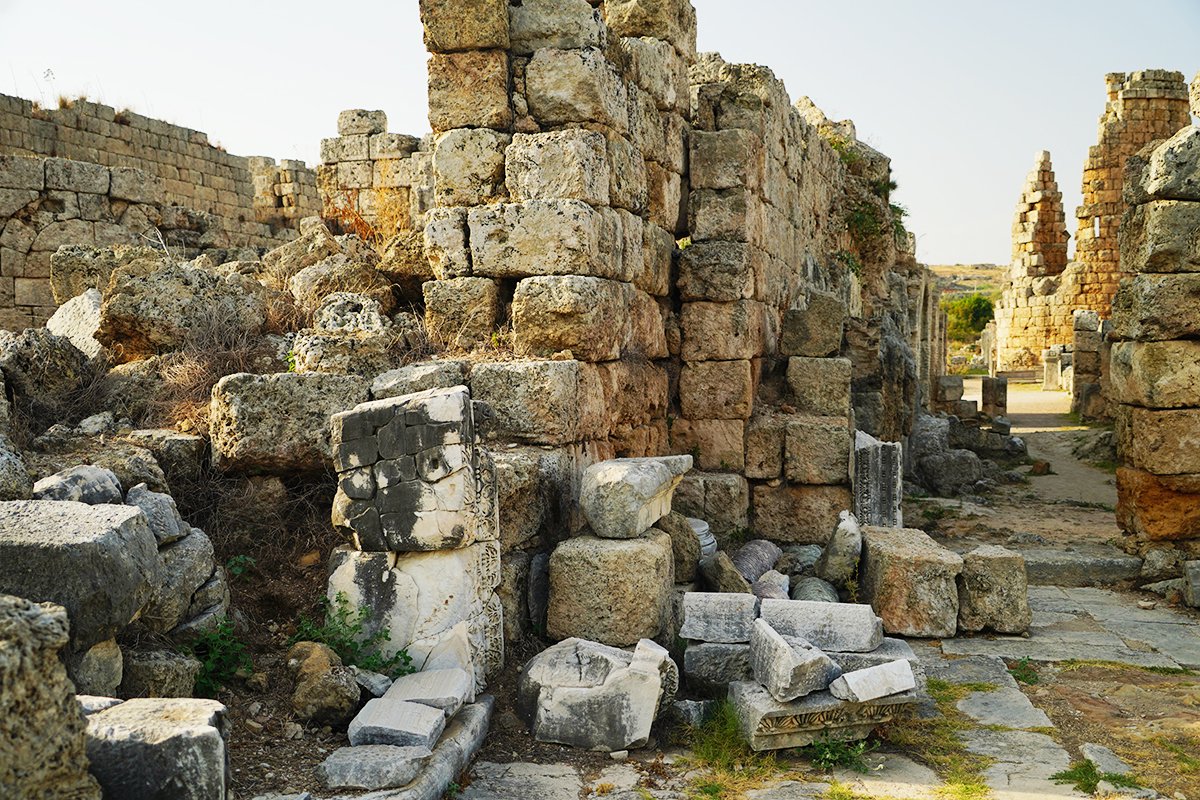

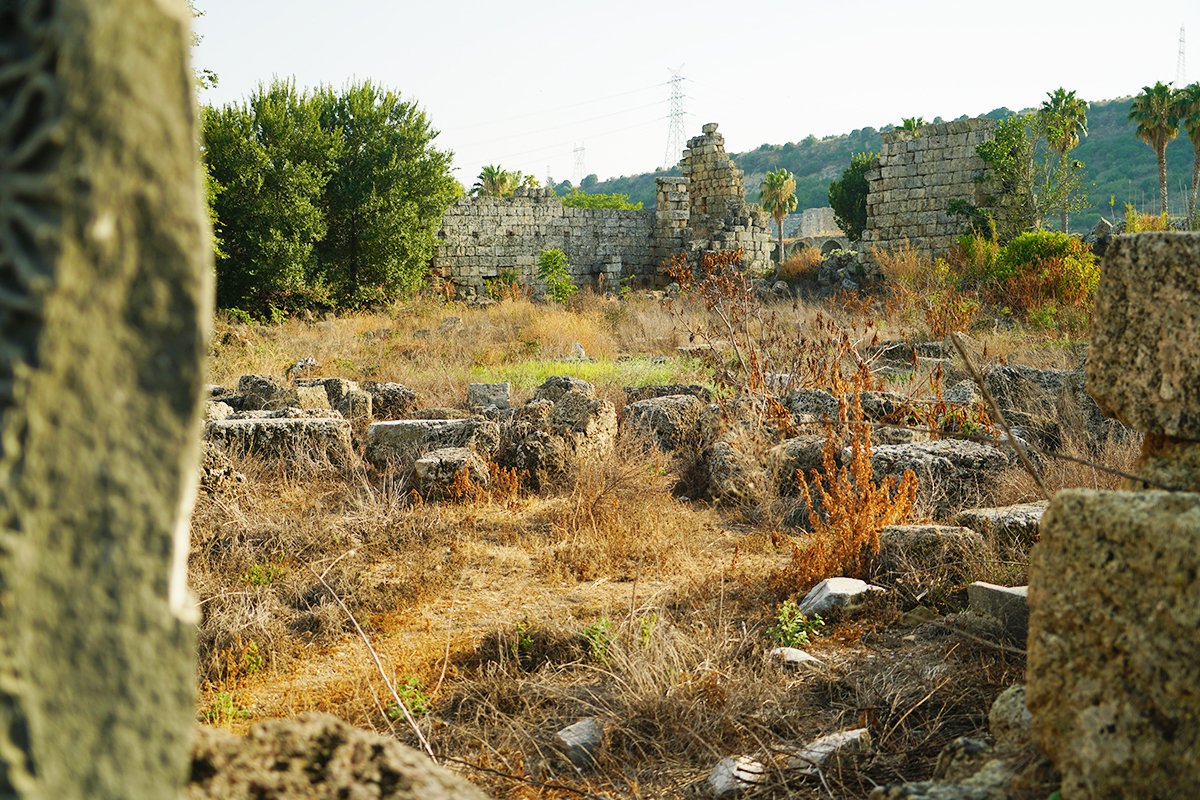

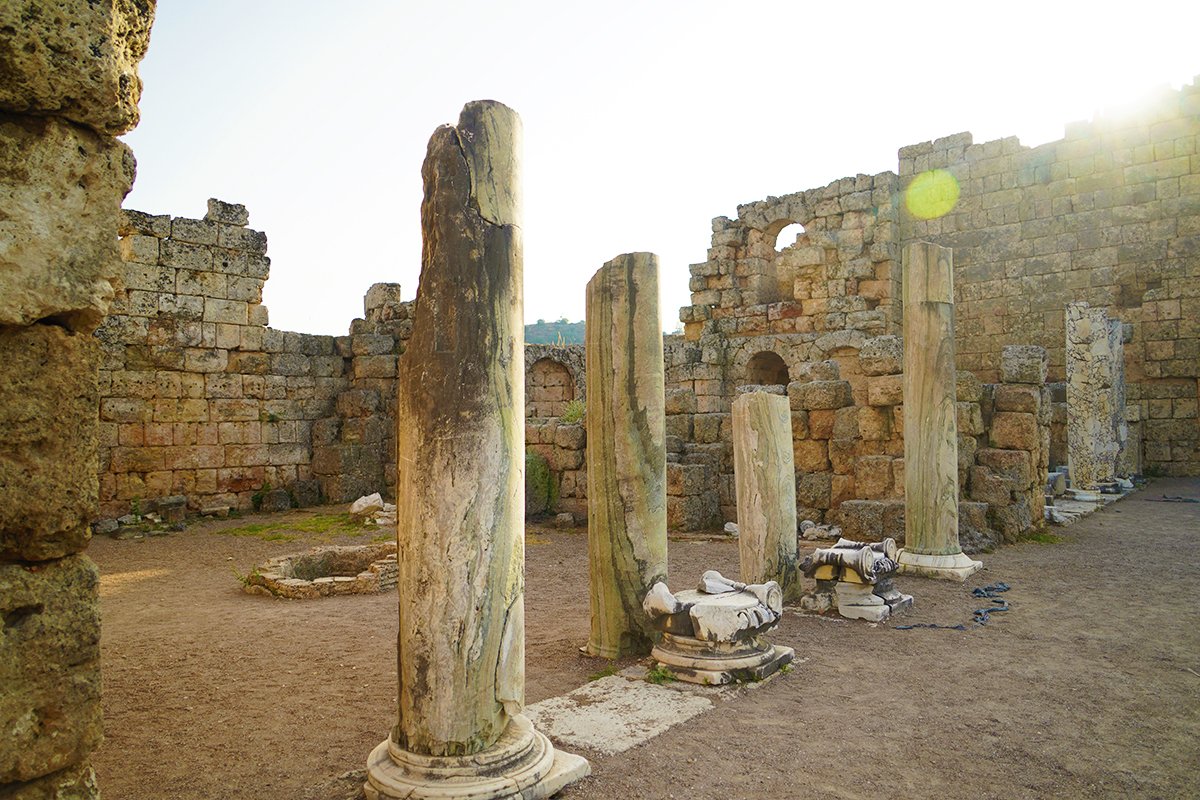
Behind the two Hellenistic towers, there is another cylindrical area which leads to the street crossings and colonnade.

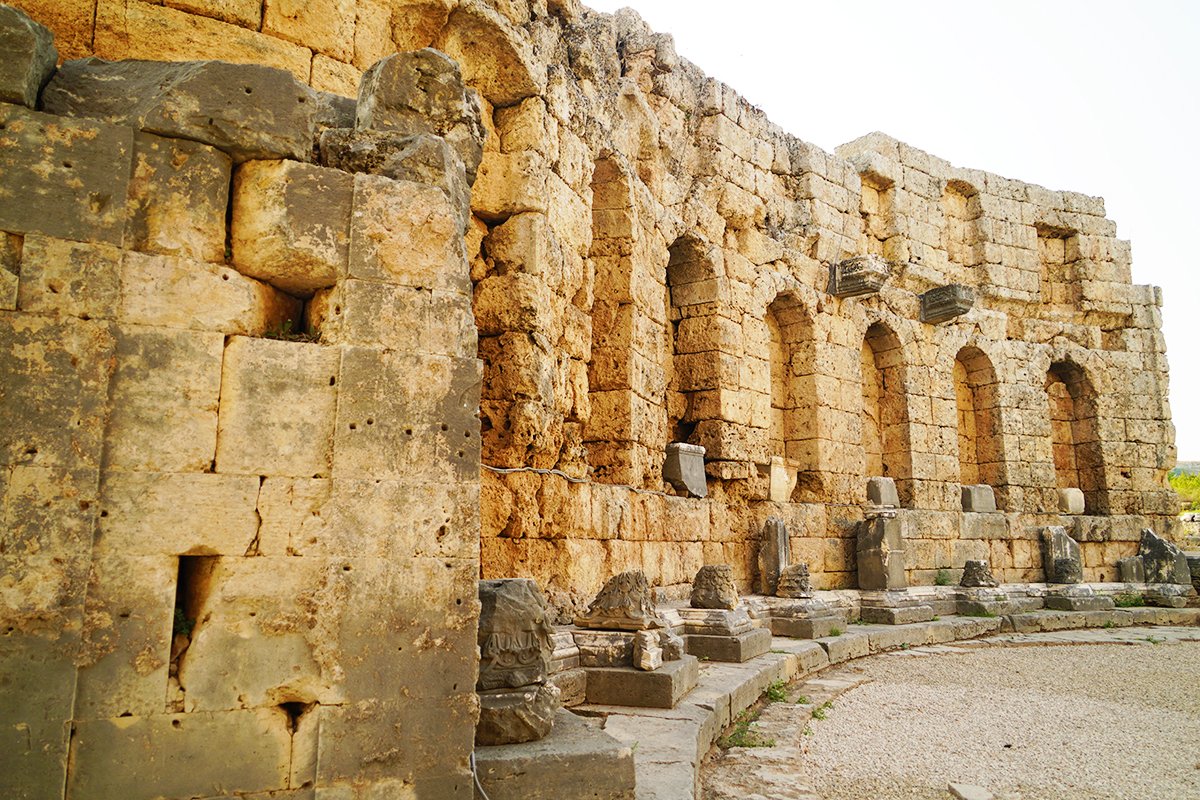

This is the long colonnade, some of the pillars are still standing.

This is the Agora. Around this area, the pillars seem to be more intact, so perfect for some more photography..
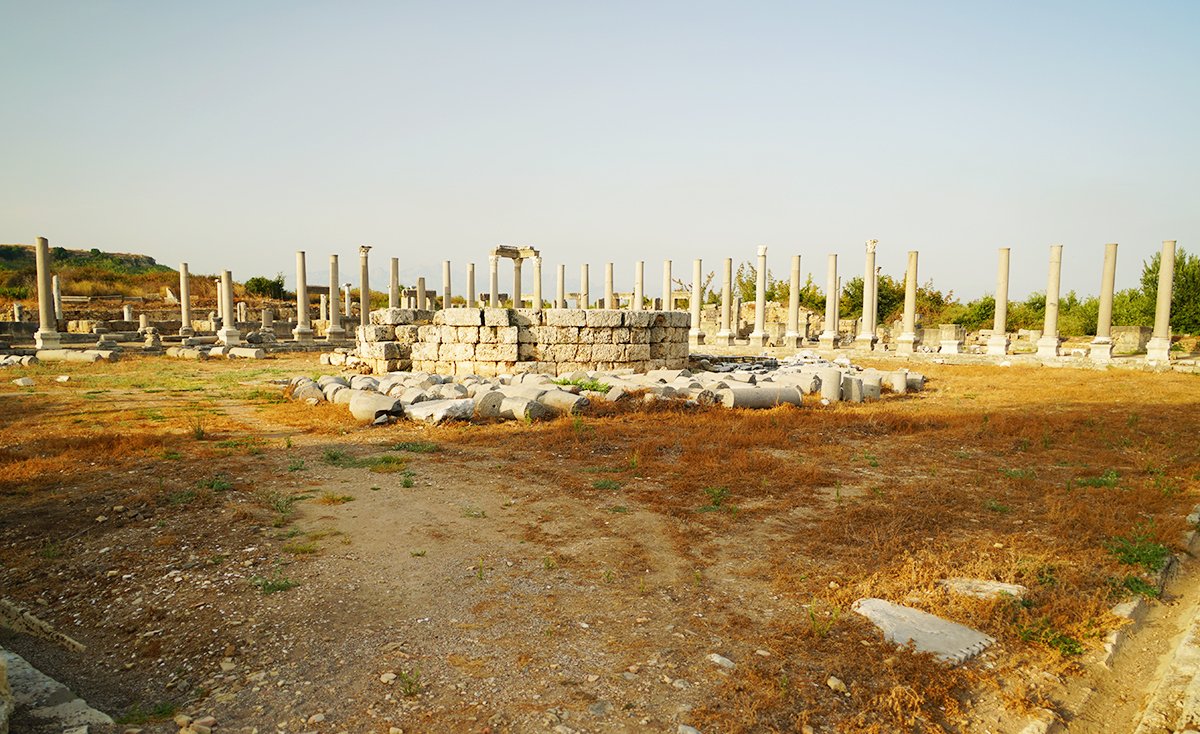

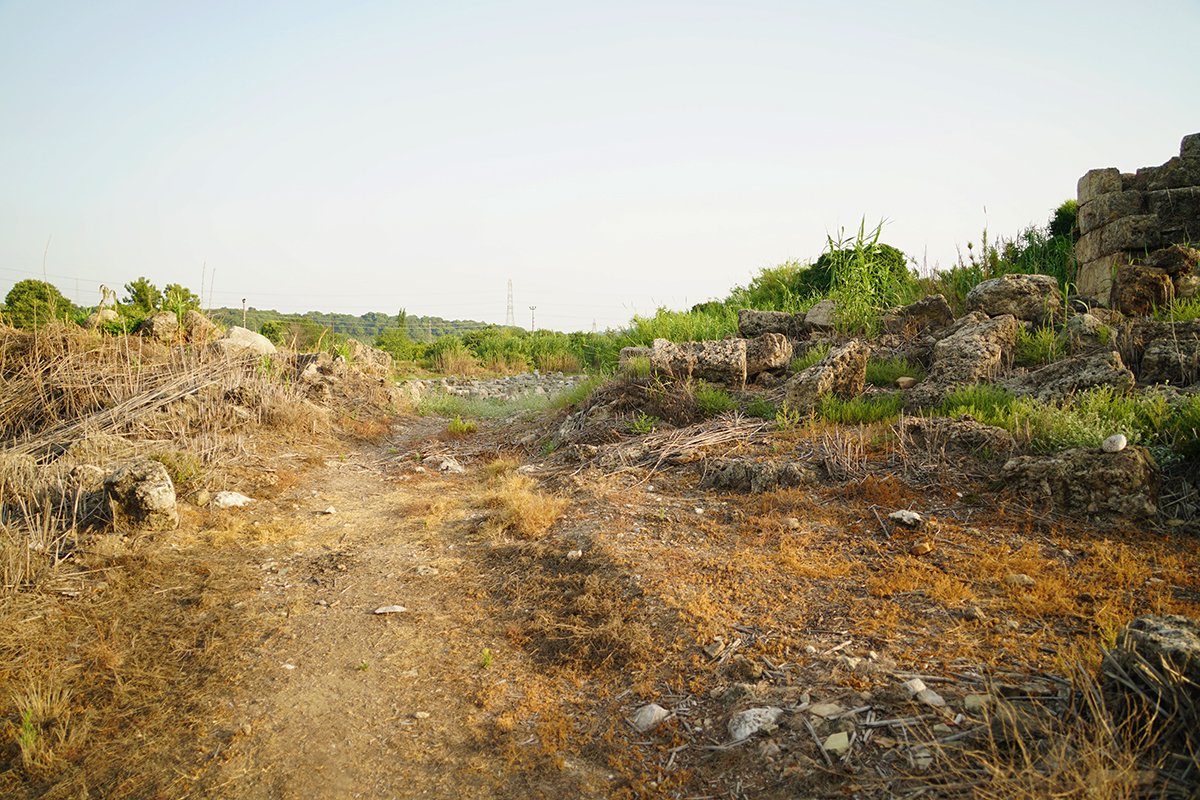
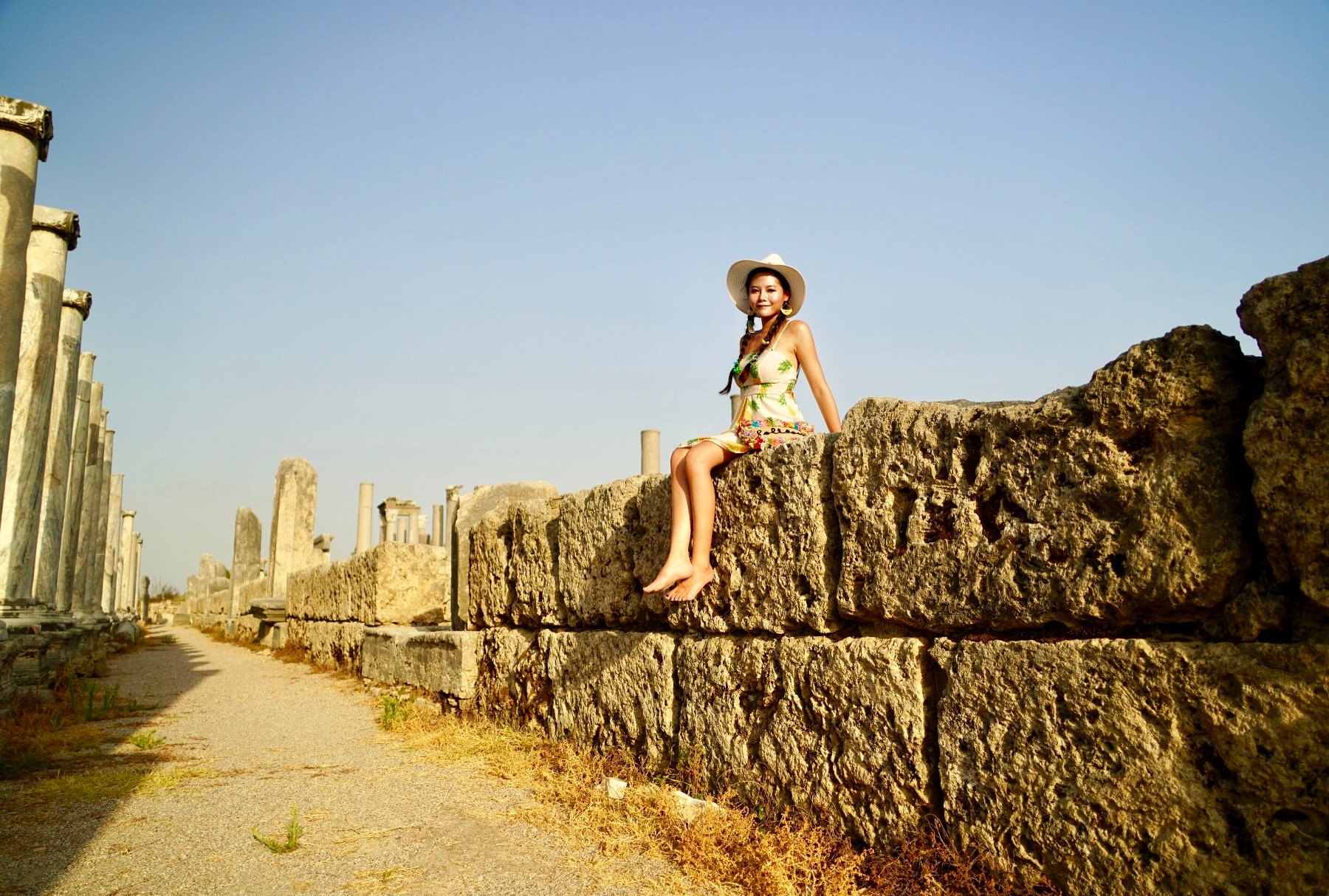
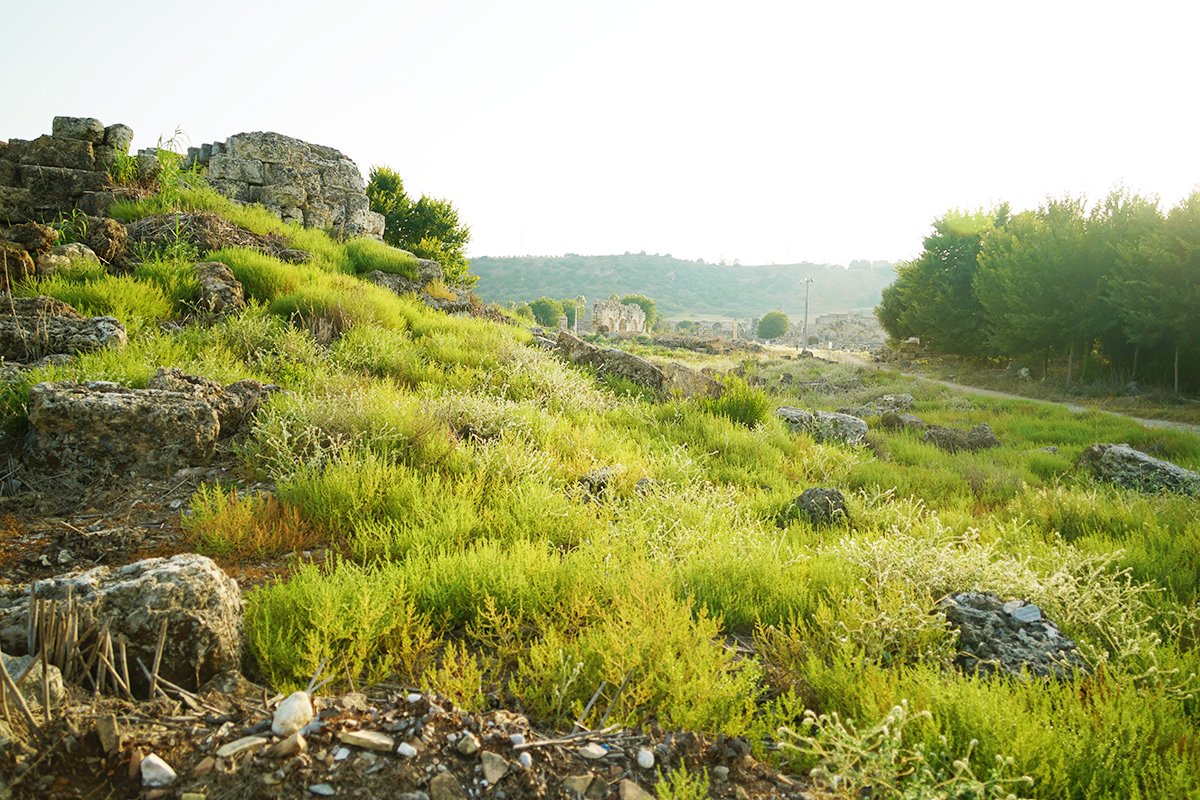

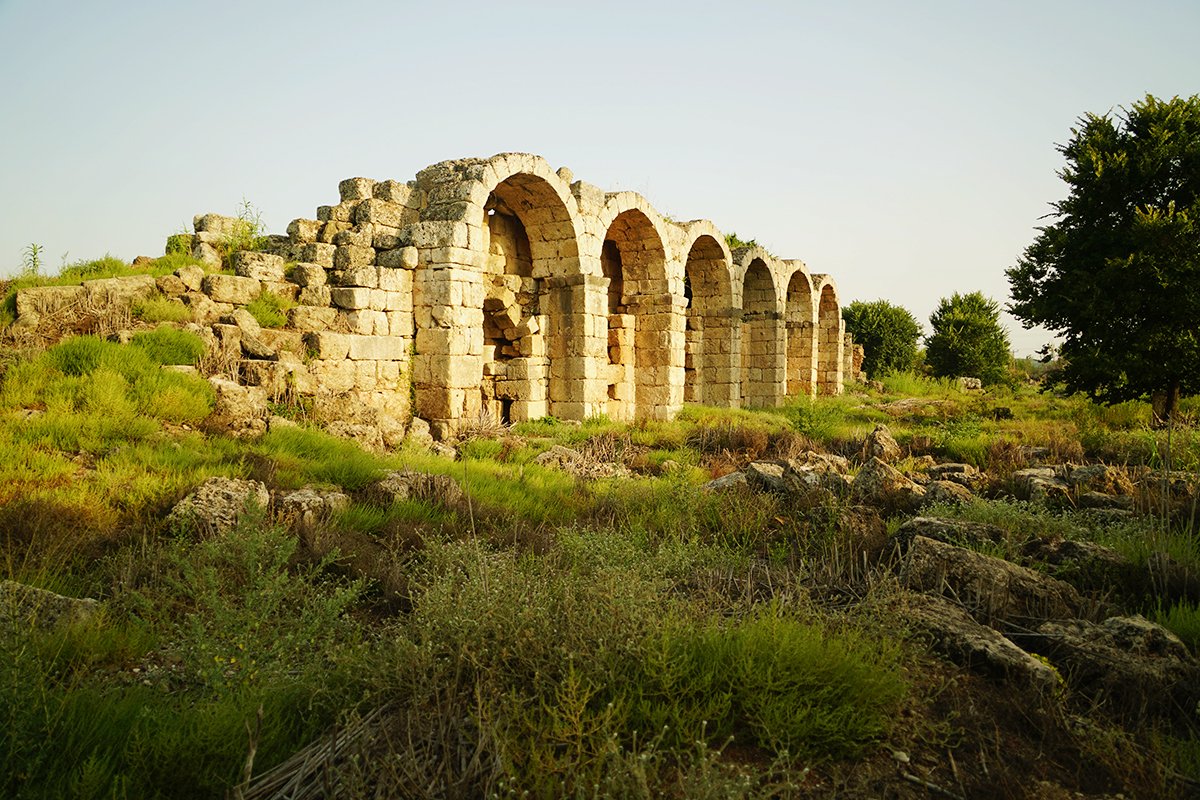
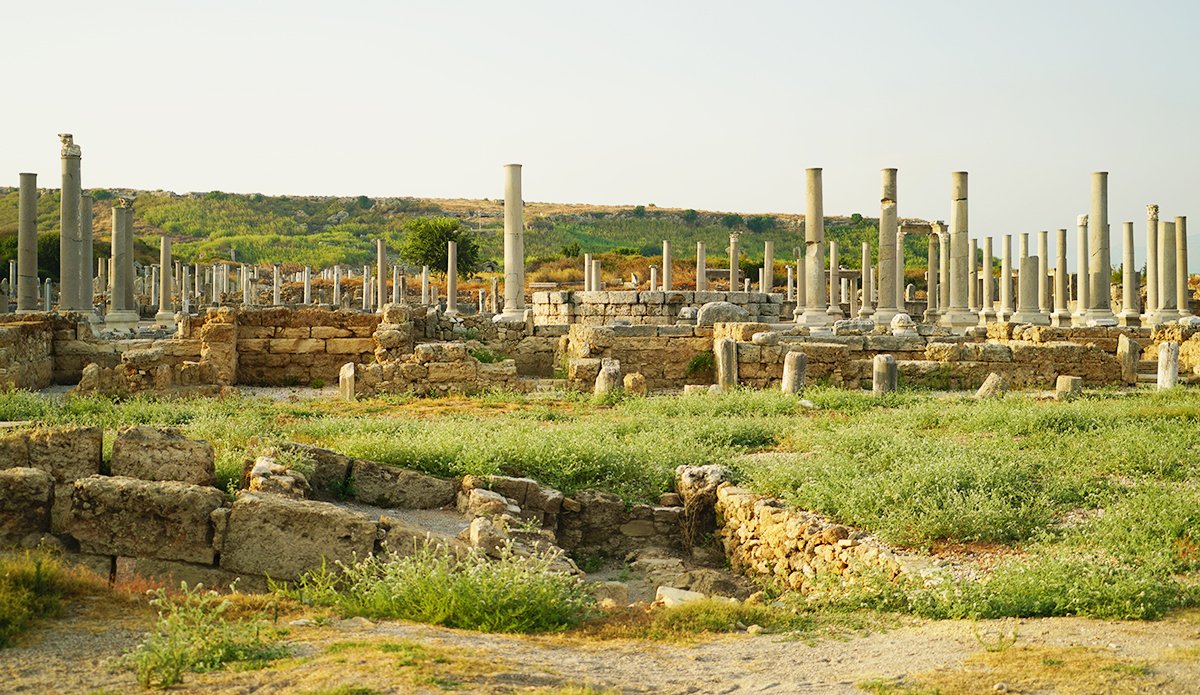
I realised after walking around for about an hour that the whole area is actually very expansive. A walk further along the colonnade would take me to the necropolis. If you remember before, I mentioned there was absolutely nobody else here, I now understood why. There was little to no shade, and during the mid afternoon, it was extremely hot.
To my surprise.. on my way back, I found this little turtle just hanging out in the middle of the path.

There are also little lizards and newts everywhere you look.
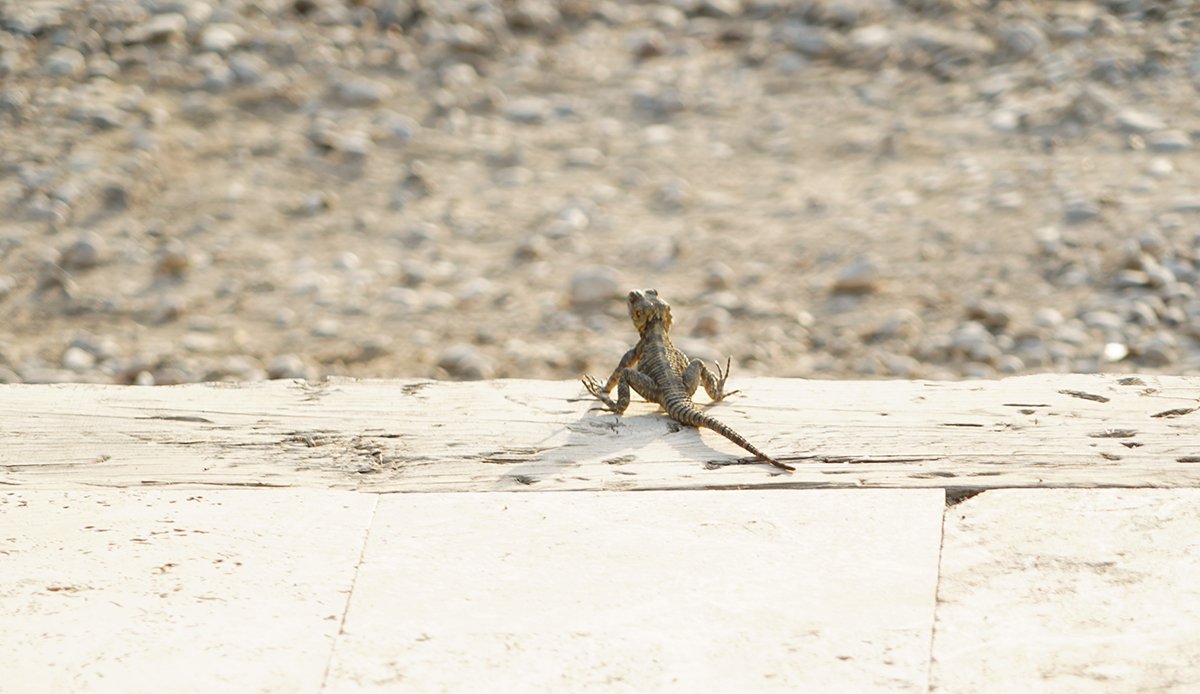
The route back out of the city leads us to the Stadium. It's not especially tall but it is very long. So long in fact, that it could seat up to 12,000 people in it's heyday. I managed to wander into the stadium through one of it's many archways which supported the seating. Surprisingly, most of them are still intact.
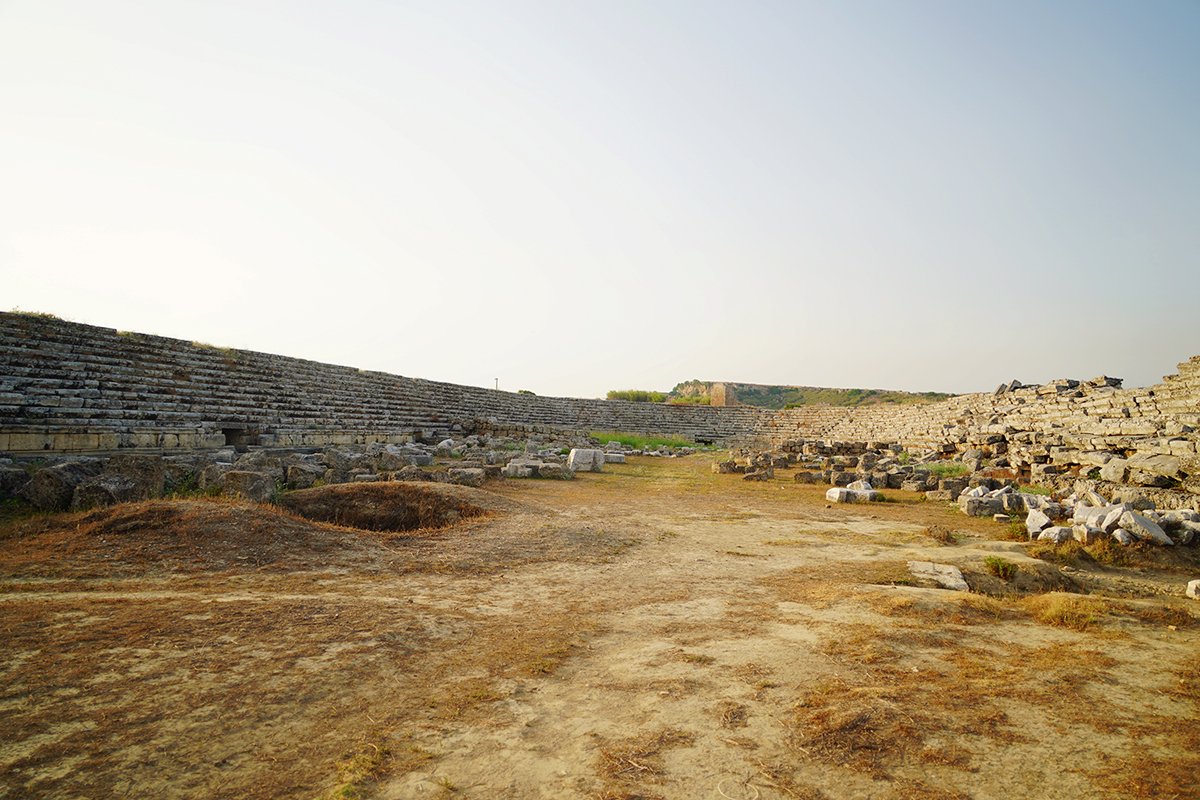
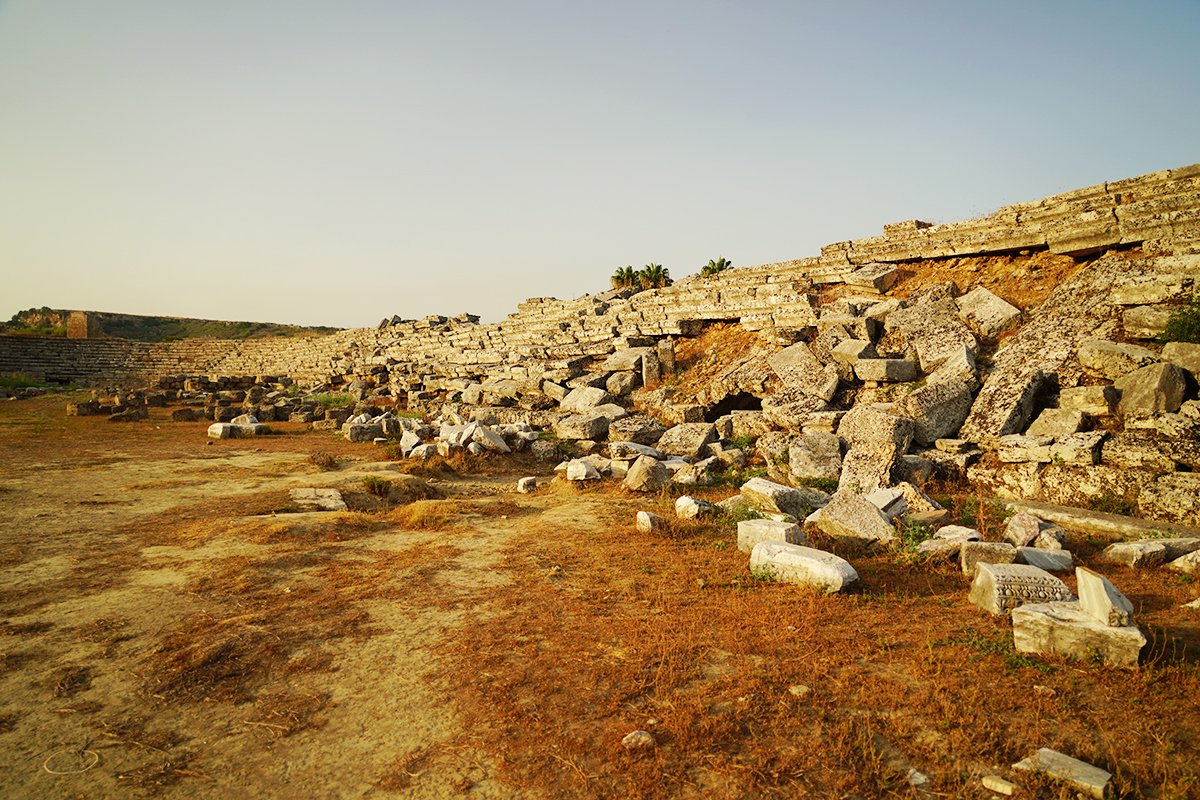
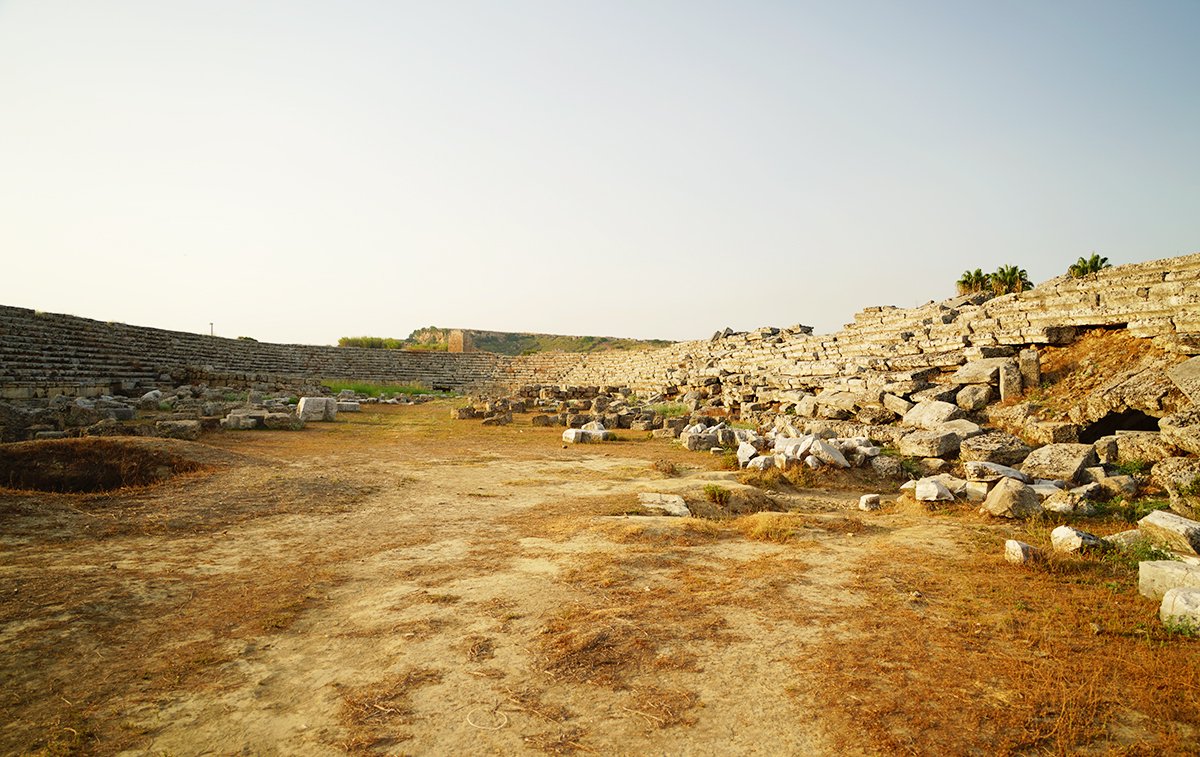
A closer look at Perge's theatre. Sadly, it was out of bounds, but you can clearly see it's shape is still mostly there.
Just a further walk up this route and we're back at the entrance.
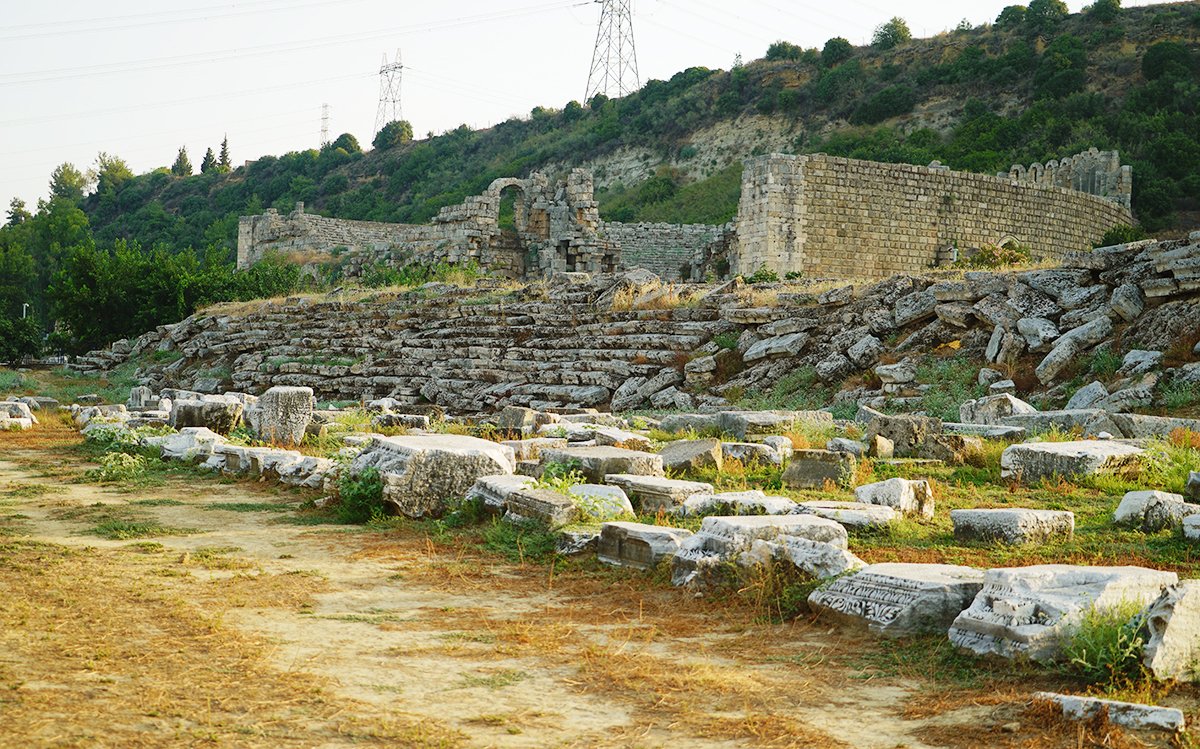
Not sure if this was the guard dog, or just a stray, but it was sitting confidently in the shade by the entrance/exit gates looking very cute!

As we drove away, I was so surprised to see a family of ducks cross the road! It was so adorable!
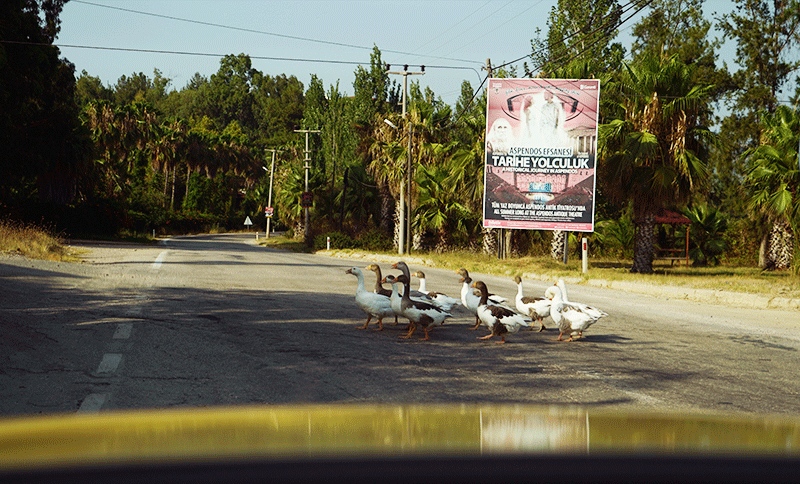
A final look at the Perge theatre, and I hope if I return, I will get to see inside it next time!

Please check out my video to see some more footage of today's visits!
And that concludes are expedition to Aspendos and Perge. I always thought that structures built over 2000 years would now look like arbitrary rocks scattered all over the floor. In the case of Perge, a lot of it was, however Aspendos was incredibly tidy and very well looked after. It's really amazing to see the scale of it in person, climbing from the bottom to the top, and then walking a long the arcade in the colonnade. The skene building was a formidable site to see, especially from the scene looking up. These structures were built prior to any of the technological machinery we have today, and shows just how advanced these ancient civilisations really were in terms of engineering, mathematics, and architecture.
Hope you enjoyed the tour and see you in the next post!
Don't forget to upvote if you liked the post, follow for more, and leave a comment to let me know what you think!

安塔利亚最吸引我的风景,有那宁静慵懒的老城区,隔绝了外面世界的车水马龙,化身为土耳其的世外桃源,温柔友善的欢迎世界各地的旅行者。安塔利亚对于大多数人来说,是一个充满人文故事和自然美景的度假胜地。但其实,安塔利亚还有更多的艺术珍宝和历史遗迹值得探寻,今天我想带大家去看看不一样的安塔利亚。
阿斯潘多斯是我们今天旅程的第一个目的地,它位于安塔利亚市东边大约40公里的位置,而古城中2000多年前修建的剧场,是人们不远万里前去游历瞻仰的最大动力。它是迄今为止世界上保存最为完好的古罗马剧场遗址之一,也是当地结构最佳的建筑。它建于公元155年,有着可以容纳下7000人的石阶观众席,剧场的直径大约96米,在历经岁月途中的风沙侵蚀,地震和战争的伤害,这个堪称建筑史上的杰作依然坚挺的站到现在,剧院精美的构造在风雨之中几乎没有丝毫摧毁和减损,依旧完美无缺的呈现给这个世界最好的姿态。
当我走进这个剧院的时候,完全是惊讶的表情,因为我很难相信它已有几千年的历史,剧院内部精美的舞台,石阶观众席,甚至连背景墙面,都如钢铁铸成一般,几乎完好无损。从个别装点着沧桑年轮的石块上,我仿佛可以读到剧院曾经的坎坷命运,在征战频繁的土耳其,饱经风霜,却能奇迹般的躲过人为的破坏,剧院的经历仿佛谱成了传奇。我仰望着那天外来客般的巨大石造,散发出的雄伟气魄,很难让我联想到它繁华落尽的忧伤,反而产生一种望之敬畏,震撼人心的赞叹之感。我爬上高大的石块上,慢慢坐下来,那一刻时间静止了。
为了更接近剧院,我决定爬山最顶层,从上往下可以一览全局。结果我发现,古时的人们大概都是人高马大,平衡能力极强,因为剧院的看台台阶非常陡峭,我穿着高跟鞋,一个不小心就容易跌倒,我努力克服着脚软带来的内心担忧,顶着炽热的阳光,全心全意的向上爬。没想到顶上不仅有最独特的视角等着我来欣赏,也是个拍照摄影的最佳取景地。观众席上方那59个拱形门甚至吸引来了当地的新郎新娘来拍婚纱照。俯瞰剧照,仔细观望,可以看到除了观众席,还能看到精致的乐队席和舞台设计,背景墙面有2层楼高,40根柱子,而柱子上还刻画着神话典故。一楼廊柱的柱子头是爱奥尼亚式,二楼是科林斯式,正中央的角墙上雕刻着酒神和戏剧之神奥尼索斯的画像。我和它们一一拍了照。
另一方面,这古老剧院的回音效果至今让人心动,它拥有完美独特的声学设计,在当年就可以实现一枚银币落地乐池的声响,在剧院最顶层的座位上也清晰可闻,而这样完美设计的秘密所在却至今没有被世人破解。而这样超前,非同一般的音效设计,让这座剧院延用至今,每年夏季的安塔利亚歌剧节和艺术节都会这里举办。现在依旧不需要任何扩音设备,观众就可以坐在2000年前的石阶上,尽情欣赏完美的音响效果。可惜我没能赶上这里的歌剧表演,我想坐在这剧院听歌剧的感觉,一定是非比寻常,让人终身难忘的。我努力的想记住眼前的场景,夕阳洒下的金色余晖与剧院那古今交错的虚幻气味交融在了一起。
接下来呢,今天的游览并没有结束,帕尔格古城遗址是我们另一个探索历史的目的地。它距离安塔利亚18公里,这个古城遗址大多是露天的残垣断壁。它在公元前6世纪由希腊人建成,公元3世纪是由罗马人统治的鼎盛时期,7世纪后随着居民陆续迁出,逐渐衰败。走在古城的街道,可以看见设计美观的罗马门为标志,古老的石块散落一地,修缮工作从未结束。经过考古学者的努力,在一根根石柱重新立起来之后,现在依旧可以大致看出这个拥有巨大规模的古城。这里有一直通向山脚下的宽阔街道,两旁林立的商铺集市,大型罗马浴场还可以清晰看到洗澡,游泳和汗蒸的不同区域,还有大场面的体育馆,让我深深感受到古罗马人在建筑上的伟大与神奇。今天欣赏历史杰作的旅程就要告于段落,接下来还有更多有趣的游记想要和大家分享。

